The Sunday Poem: “Carla Bley” – by Dan Brown
The poet shares a memory of the jazz pianist Carla Bley
...The poet shares a memory of the jazz pianist Carla Bley
...They stretch octaves
across the sheet music
and the decades
of “Charleston Rag”
fingers like twisted bent tree trunks–
remembered rivers of antiquity
flowing through his veins–
Hurrying to a dental appointment
I didn’t want to go to in the first place
an interminable red light and honking traffic
and the curve where people merge
20 MPH faster than necessary
four lanes into two
not a good day overall
though Sonny Rollins is playing loud;
. . The cover of the 1987 Mosaic Records collection of The Complete Blue Note Recordings of Herbie Nichols . . Thinking of Herbie I was thinking about jazz masters who died too young– private accolades for America’s unknown legion, perished by addiction, illness or accident— Herbie Nichols I didn’t forget you. Dead of … Continue reading ““Thinking of Herbie” – a poem by Daniel W. Brown”
...it seems like thousands
of nights hunkered
over dark beer and jazz
with my Guru
the janitor who taught
jazz to the novice
An exquisite poetry collection that honors the poet’s past in touching, passionate verse inspired by priceless family photographs.
...The story – a finalist in the recently concluded 66th Short Fiction Contest – focuses on two people whose passion for music infuses their lives… and their chance at love.
...In this fourth edition featuring excerpts from his book, Rife writes about five novels/short fiction that include stories about the interconnected cultures of jazz, dancing and nightclubs.
...A short-listed entrant in the 65th Short Fiction Contest is about a lonely writer in New York City who descends into madness upon realizing she is the only person who can hear the jazz music playing under her apartment.
...The author discusses the iconic tenor saxophonist who is one of the greatest jazz improvisers of all time, a lasting link to the golden age of jazz
...It’s
sittin’ in the corner knowing what others don’t get and smile-noddin’ over scotch and coda after a day bounced you about like Buddy’s snare and high hat clamped you down to sweet Georgia brown dirt in the Summertime wailed by Sidney Bechet
Sidney Bechet was a nasty man
ill-tempered and suspicious
– anything but jolly –
a man of hot and steamy trade
wielding the iron all morning
in his New York basement tailor shop
In a July 27, 2020 conversation with Jerry Jazz Musician editor/publisher Joe Maita, the historian and most eminent jazz writer of his generation Dan Morgenstern and pianist Christian Sands – the Creative Ambassador of the Erroll Garner Jazz Project – discuss Garner’s historic legacy.
...The shimmering bulb of the brown Long Island sunset was barely enough to illuminate the silently flailing figure in the water. The flaming ball stared down at the commotion from beneath its skin of smog, but the girl simply picked the loose sand up in her hands, running the granules through her stubby fingers, fascinated by the way it felt on her palms, but irritated by how it stuck under her bitten nails.
...Nothing can spoil today, not even our Sue. It’s the third Saturday in September, 1978. I’m 11 years old and like every other girl in our street, (and some of the boys), I’ve waited months for this. I know all the singles off by heart, I’ve watched the videos on Top of the Pops, posters of John Travolta have replaced Starsky and Hutch on my bedroom wall, and finally, FINALLY, after hearing the songs all Summer, the people of England can go to the cinema and watch Grease.
All the Brook Street lot are going; kids from six different families with four of their mums; The Thompsons, the Maguires, the Connollys, the Yips, the Browns and us. I’m as excited as the rest of them, but the difference is, I can’t tell anyone who the flutters in my stomach are for.
We all get the bus together. It’s packed and we have to stand in the aisle, fingers slippery on the
...A trumpet squealed in the hospital halls. The note, like a brass rabbit, zipped past room 334. Moments later Mr. Fahrenheit watched two orderlies jog past the open door: not too fast, not real slow. It appeared to be the speed of indicated hurry. A few more notes from the trumpet whizzed down the hall before they too slowed to a jog, and then drew themselves out into expressions of gold, blue, green then stopped before Mr. Fahrenheit could call the name of the song to mind. The next few notes he tapped out on the back of the hand he held in his own. His wife did not respond. Even he had begun to forget to expect a response. She inhaled. She exhaled. The eyes beneath her blue lids quivered and shimmered.
...Buying a vinyl long playing jazz album in the format’s heyday — from the 1950s through the 1980s — was a three-step sensual process that stirred an almost irrational enthusiasm for the entire culture the music ignited. The record industry’s flair for creating passionate cover art seduced the imagination, the sounds etched into the grooves promised diversion and surprise, and the densely-typed liner notes on the back cover fired up an eagerness for enlightenment. The process continued at the turntable, where the cut of a stylus transformed the listener into an aural witness to the performer’s character and improvisational skills. It was, quite simply, a bonding experience.
...Friends remember Al Summ, whose love and appreciation of jazz showed up in a variety of ways. His artwork was found (and rescued) by his friends Dan Brown, Dave Watson, Bob Crimi and “Andy” – a.k.a. “The Gang of Four”.
This remembrance is a reminder of how jazz and its culture can touch the soul of an enthusiast, and a demonstration of a longtime, devoted friendship. I am proud to assist the “Gang” in sharing their heartfelt connection to their departed friend.
...In anticipation of a collection of jazz haiku — to be published sometime in August, 2023 — a small sampling of the jazz haiku received so far is published here.
...This is the 14th extensive collection of jazz poetry published on Jerry Jazz Musician since the fall of 2019, when the concept was initiated. Like all previous volumes, the beauty of this edition is not solely evident in the general excellence of the published works; it also rests in the hearts of the individuals from diverse backgrounds who possess a mutual desire to reveal their life experiences and interactions with the music, its character, and its culture.
...A collection in which over 30 poets communicate their appreciation for jazz music in poems no longer than seven lines.
....This collection of jazz poetry – the largest yet assembled on Jerry Jazz Musician – demonstrates how poets who are also listeners of jazz music experience and interact with the spontaneous art that arises from jazz improvisation, which often shows up in the soul and rhythm of their poetic language.
...In five separate poems, poets write of Robert Johnson, Beethoven, Ornette Coleman, Duke Fakir and The Band
...A broad collection of jazz poetry authored by an impressive assemblage of regular contributors and established poets new to this publication – all of whom open their imagination and hearts to the abundant creative experience they derive from this art.
...Over 60 poets from all over the world celebrate their love of jazz…in poetry.
...Molly Larson Cook’s abstract-expressionist paintings accompany the 50 poets contributing to this collection. Her art has much in common with the poetry and music found within it; all three art forms can be described as “landscapes of the imagination,” created by artists from all over the world who are inspired in a meaningful way by jazz music, and whose work can be uniquely interpreted and appreciated (or not!) by those who consume it.
...“It’s not exclusive, but inclusive, which is the whole spirit of jazz.”
-Herbie Hancock
.
And…this spirit is not limited to the musicians, because celebrating jazz is rich in creative opportunity for writers and visual artists as well. The 54 poets who contribute to this poetry collection are living proof of that.
As always, thanks to the poets, and I hope you enjoy…
Joe
...The author relates a story that led to his eventual friendship with the jazz greats Sheila Jordan and Mark Murphy…
...In this story – a short listed entry in our recently concluded 66th Short Fiction Contest – a private investigator tries to help a homeless friend after his saxophone is stolen.
...Tucker works as a jazz pianist aboard the deep space luxury cruiser, the Royal Nebula. A flirtatious interlude pushes his new emotional software to its limits and beyond, and he learns the hard way what it means to be human.
...For over 60 years, the legendary recording engineer Rudy Van Gelder devoted himself to the language of sound. And although he recorded everything from glee clubs to classical music, he was best known for recording jazz – specifically the musicians associated with Blue Note and Prestige records. Joel Lewis writes about his impact on the sound of jazz, and what has become of his Englewood Cliffs, New Jersey studio.
...The story – a short-listed entry in our recently concluded 66th Short Fiction contest – is a humorous take on a septuagenarian attempt to resurrect a revival band,
...A raggedy man lived for music and Nina Simone,
called himself “Mr. Bojangles,”
played jazz on his secondhand sax,
tap-danced for tips and smiles.
The myths surrounding the life and career of blues legend Robert Johnson is discussed in a November, 2003 interview with the blues historian Barry Lee Pearson.
...The story – a short-listed entrant in our recently concluded 66th Short Fiction Contest – centers on the effects of COVID on an interracial, interfaith family…
...The author talks about his book, an intensely researched, spirited, and beautifully told story – and an important reminder that Armstrong, Ellington, and Basie all defied and overcame racial boundaries “by opening America’s eyes and souls to the magnificence of their music.”
...In this edition, Rife writes about three novels/short fiction that include stories about Scott Joplin, the primary forerunner and significant influencer of jazz.
...In this story – a finalist in our recently concluded 66th Short Fiction Contest – a Black magician reveals his life’s complexity to a white therapist who questions his ability to address it.
...The esteemed writer tells a story about the jazz world before, during, and after the 1959 recording of Kind of Blue, and how the album’s three genius musicians came together, played together, and grew together (and often apart) throughout the experience.
...The story – a finalist in the recently concluded 65th Short Fiction Contest – concerns a father’s determined commitment to demonstrate his values to his family through a spontaneous personal action
...In this excerpt from Designed for Success, the authors write extensively about music instruction and appreciation records dealing with the subject of jazz.
...…From “Fatha” Hines to Brad Mehldau, poets open themselves up to their experiences with and reverence for great jazz pianists…
...While consuming Mary K O’Melveny’s remarkable work in this digital album of poetry, readings and music, readers will discover that she is moved by the mastery of legendary musicians, the wings of a monarch butterfly, the climate and political crisis, the mysteries of space exploration, and by the freedom of jazz music that can lead to what she calls “the magic of the unknown.”
...In this, the 17th major collection of jazz poetry published on Jerry Jazz Musician, 50 poets from all over the world again demonstrate the ongoing influence the music and its associated culture has on their creative lives.
.... . This space on Sunday is generally reserved for a single poet to read one of their works, but this week’s issue -Father’s Day – features 23 poets who weigh in on the complexity of their relationship with their father, revealing love, warmth, regret, sorrow – and in many cases a strong connection … Continue reading “The Sunday Poem(s): 23 Poets remember their father…”
...In this edition, Rife writes about four novels/short stories that include stories involving relationships between fathers and children.
...A short-listed entrant in the 65th Short Fiction Contest is a story about an accidental audition…
...On the 30th anniversary of the guitarist Joe Pass’ death, Kenneth Parsons reminds readers of his brilliant career…
...While small group swing was shunned by the jazz critical establishment for being too flamboyant and too close a cousin to the emerging (and despised) rock and roll, Richards makes the case that small group swing players like Illinois Jacquet, Louis Jordan, Big Jay McNeely, Joe Liggins, Red Prysock, T-Bone Walker and Ray Charles played a legitimate jazz that was a more pleasing listening experience to the Black community than the bebop of Parker, Dizzy, Bud Powell and Monk. It is a fascinating era, filled with major figures and events, and centered on a rigorous debate that continues to this day – is small group swing “real jazz?”
...Few music industry executives have had as meaningful an impact on jazz music as Michael Cuscuna, who passed away on April 20 at the age of 75. He dedicated his life to music – particularly to the concept of mining and marketing the music recorded a generation ago by essential and under-appreciated jazz musicians buried deep in record label catalogs.
...“Community Bookshelf” is a twice-yearly space where writers who have been published on Jerry Jazz Musician can share information about their recently authored books.
...My friend is a Blues singer,
I am a Jazz drinker,
boozing shots after shots,
I never get drunk with Jazz.
The trumpet melody glided on a cloud of clarinet and trombone notes. All three instruments dipped and soared over a rhythmical sea of piano, bass, and drums.
...in this 2005 interview, Ben Green, author of Spinning the Globe: The Rise, Fall, and Return to Greatness of the Harlem Globetrotters, discusses the complex history of the celebrated Black touring basketball team.
...The 19 poets included in this collection effectively share their reverence for jazz music and its culture with passion and brevity.
...In a 2002 interview, Carla Kaplan, editor of Zora Neale Hurston: A Life in Letters, talks about the novelist, anthropologist, playwright, folklorist, essayist and poet whose work is is taught in American, African American, and Women’s Studies courses in high schools and universities from coast to coast.
...One-third of the Winter, 2024 collection of jazz poetry is made up of poets who have only come to my attention since the publication of the Summer, 2023 collection. What this says about jazz music and jazz poetry – and this community – is that the connection between the two art forms is inspirational and enduring, and that poets are finding a place for their voice within these virtual pages.
...In this interview, Alyn Shipton discusses Cab Calloway, whose vocal theatrics and flamboyant stage presence made him one of the country’s most beloved entertainers.
...A story that takes place over the course of a young man’s life, looking specifically at all the women he’s loved and how the presence of a derelict building informs those relationships.
...In Becoming Ella Fitzgerald: The Jazz Singer Who Transformed American Song, the book’s author Judith Tick writes that Ella “fearlessly explored many different styles of American song through the lens of African American jazz, [and] treated jazz as a process, not confined to this idiom or that genre,” and who “changed the trajectory of American vocal jazz in this century.” Ms. Tick. who is professor emerita of music history at Northeastern University, talks with about Ella – and her book – in this wide-ranging October 23, 2023 interview.
...Mamacita
with round brown
hips
roll and sway
sway and roll
slow that stroll
she sings
to ease
her sticky soul
Seven poets combine and art of jazz with an act of love…
...The journalist and poet Joel Lewis shares his immensely colorful story of falling in love with jazz, and living with it and reporting on it during his younger days in New Jersey and New York
...An account that the photographer Veryl Oakland shared of his time spent with Carla Bley and her then-husband Michael Mantler during her visit to the San Francisco Bay area in 1979. This encounter is an example of how she’d find inspiration for her music; in this case within the “the marvelous inner workings of mechanical music boxes.”
...A collection of Connie Johnson’s poetry is woven among her audio readings, a personal narrative of her journey and music she considers significant to it, providing readers the chance to experience the full value of her gifts.
...Earlier this year I invited poets to submit jazz-themed poetry that didn’t need to strictly follow the 5-7-5 syllabic structure of formal haiku, but had to at least be faithful to the spirit of it (i.e. no more than three lines, brief, expressive, emotionally insightful).
This collection, featuring 22 poets, is a good example of how much love, humor, sentimentality, reverence, joy and sorrow poets can fit into their haiku devoted to jazz.
...“Community Bookshelf” is a twice-yearly space where writers who have been published on Jerry Jazz Musician can share information about their recently authored books.
...This edition features poetry chosen from hundreds of recent submissions, and from a wide range of voices known – and unknown – to readers of these collections. The work is unified by the poets’ ability to capture the abundance of jazz music, and their experience with consuming it.
...n On the Road, Jack & Neal raced Rocky Mount to Ozone Park,
speeding dark quiet American roads
Today, 2023. I drive the new superhighways, continuous sterile green
at median & shoulders,
Vivaldi, especially “The Four Seasons,”
keeps showing up in forms of jazz:
a hint, a structure—but try unraveling
any musical DNA you go straight back
to singing and to drum, voice and poetry—
20-year-old Priscilla Habel lives with her wannabe flapper mother who remains stuck in the jazz age 40 years later. Life is monotonous and sad until Cil meets Willie Flasterstain, a beatnik lesbian who offers an escape from her mother’s ever-imposing shadow.
...Best known as the trumpeter who replaced Cootie Williams in Duke Ellington’s orchestra, he was also one of the finest jazz violinists of the 1940’s. Who was he?
...The poet describes his joyful experience of listening to “Mumbles,” a 1964 recording by Oscar Peterson with Clark Terry
...Nine poets, nine poems on the leading figure in the development of bebop…
...In a 2014 Jerry Jazz Musician interview, the late jazz writer and cultural critic Stanley Crouch shares his thoughts on Charlie Parker, a great genius of modern music…
...Two completely different experiences in Vienna jazz clubs demonstrates how impresarios of the music, like the musicians themselves, see the music as being “beyond category.”
...The poets share their love of jazz through personal narratives, and memories of live performances
...Contrafacts, as such reworkings are called, are the product of writing a new melodic line over an existing set of chord changes, thereby disguising or sometimes completely obscuring the identity of the original piece.
...The daughter of Reverend Ralph Abernathy talks about her life as a child of the civil rights movement, and to remember the two visionaries who changed the course of American history
...In a 2000 interview, Ean Wood, author of The Josephine Baker Story, discusses the entertainer’s groundbreaking, extraordinary life
...Writers talk about influential life experiences with writing, literary figures who inspired their work, overcoming creative and economic challenges, and where they fit in today’s publishing model.
...In this short listed entry from the 61st Short Fiction Contest, a man’s eating habits alter along with the cycles of his love life.
...Mr. Mott discusses this posthumous anthology of extraordinary, thought-provoking uncollected essays by Stanley Crouch.
...Ralph Ellison biographer Arnold Rampersad talks about the complex life of the author of Invisible Man, the celebrated work that focuses on racial and economic issues of mid-20th century America
...“Blow by Blow” is a portrait of Berkeley, California in the 1970’s, and the fusion jazz that was finding its way onto the scene at that time.
...The poet reveres the power and beauty and historical significance of Black women, and reads his poem
...The author writes of his friendship with Ray Charles, and his son’s 2000 interview with him.
...According to the All Music Guide to Jazz, this bassist “probably appeared on more records than any other musician in the world,” recording on “everything from Jackie Gleason mood music and polka bands to commercials and Buck Clayton jam sessions.” Who was he?
...A review of Stephon Alexander’s book, “The Jazz of Physics: The Secret Link Between Music and the Structure of the Universe”
...A Spotify playlist featuring standard tunes from the Great American Songbook as performed by hard bop musicians.
...A former contemporary dancer struggles to find her place in both the world and her own body after leaving her discipline behind for a career in software development.
...A conversation about race with the author of “N: My Encounter with Racism and the Forbidden Word in an American Classic”
...In the book’s prologue, published here in its entirety, the author writes about some of “The Real Ambassador’s” challenges getting to the stage.
...In this edition, Jeff Gold writes about two Harlem night spots – The Apollo Theater and Club Baby Grand – and shares photographs and memorabilia from his collection.
...This trumpeter played on almost all of Dinah Washington’s recordings, even if he had to do so under the pseudonym of “Dobbie Hicks.” Who is he?
...Mamacita with round brown hips roll and sway sway and roll slow that stroll
...Inspired by the essays collected in the jazz and cultural critic Nat Hentoff’s 2010 book At the Jazz Band Ball: Sixty Years on the Jazz Scene, in this series of poems Sean Howard uncovers new relationships and resonances in the author’s writing – reusing, recycling, and remixing text from the book as poetry – while allowing him the opportunity to pay a personal tribute to a writer he reveres.
...Carla Kaplan, editor of Zora Neale Hurston: A Life in Letters, talks about the novelist, anthropologist, playwright, folklorist, essayist and poet
...Gail’s days on the bandstand are behind her now, London nights swapped for the life of a farmer’s wife back in Devon. But if an intriguing young man with a love of Billy Strayhorn wants sax lessons, who is she to deny him the chance to experience what she has given up?
...In a 2014 Jerry Jazz Musician interview, the late jazz writer and cultural critic Stanley Crouch shares his thoughts on Charlie Parker, the great genius of modern music…
.
...do you hear the wind?
see that scarlet leaf
dance on concrete?
I am that wind
I am that leaf
I am that dance
In a November 16, 2020 interview with Jerry Jazz Musician, Ricky Riccardi, author of Heart Full of Rhythm: The Big Band Years of Louis Armstrong, discusses his vital book and Armstrong’s enormous and underappreciated achievements during the era he led his big band.
...In an excerpt from his book Soundtrack to a Movement: African American Islam, Jazz, and Black Internationalism, Richard Brent Turner writes about Max Roach and his wife, the singer Abbey Lincoln, and the contributions they made to social justice, constructed in the intersecting worlds of African American Islam and jazz.
...A 34-year old childless bachelor reluctantly agrees to babysit the nine-year old daughter of a friend of his on a Saturday night in September. The experience leads to a life-changing revelation.
...A remembrance (and photographs) of Pat Martino is excerpted from the photographer Veryl Oakland’s book Jazz in Available Light, in which he writes about the 1976 photo session at San Francisco’s Palace of Fine Arts.
...Dim dusk breaks down
the receding light and one after another
strands of the passing hour unravel
leaving behind an existence beyond time
that opens the doors to another world:
It’s late in the evening in a foreign metropolis
One of the best things about my life is that in the course of it I had the chance to see the great Blind Lemon Jefferson on eleven different occasions. This was especially gratifying because for me he was the finest blues singer who ever lived, even better than Robert Johnson or Charlie Patton or Bessie Smith.
...In the closing weeks of 1949, the consensus of New York’s cognoscenti was unanimous: the American debut of London’s Sadler’s Wells Ballet was the triumph of the post-war era. The praise and attention lavished upon the visiting artists was unrelenting; the Yanks’ sudden passion for tutus, Tchaikovsky, and entrechat quatres bordered on obsession. And yet, three weeks into their engagement, with four performances at The Met remaining, their company’s esteemed music director and conductor Constant Lambert was bored to tears.
...Stella sticks her toes in the grass
and she don’t know the impact—
the moonlight bending on the bowing blades of grass
casting long shadows like tracks
I follow her, relaxed.
A photograph of Jimmie Lunceford and my dad in Sacramento, California; c. 1937
...In this edition, Gold writes about New York’s Midtown Manhattan club Birdland, and shares photographs and memorabilia from his collection.
...Few artists inspire creativity like Miles Davis. This collection of poetry by 50 poets from all over the world is evidence of that.
...An interview with The Art of Jazz author Alyn Shipton, whose book is an exploration of how jazz influenced sheet music art, album art, posters, photography, and individual works of fine art.
...The author talks about his book and the rare collection of 200 full-color and black-and-white souvenir photos and memorabilia that bring life to the renowned jazz nightclubs of 1940’s and 1950’s.
...Gareth Davey writes a fictional account of the tragic death of the jazz trumpeter Lee Morgan
...A 50 song jazz playlist featuring countless great performances, including by Shirley Horn, Ella Fitzgerald, Sarah Vaughan, Frank Sinatra, Mel Torme, and many others
...An intimate portrait of Bill Charlap and mother Sandy Steward, who explore the art of musical collaboration and accompanying singers.
...A collection of the poet Erren Kelly’s unconstrained, improvisational and provocative poetry written during the era of COVID
...Are you singing on balconies these days?
Do you still sing only in your car, radio tuned
to hot, blistering jazz?
He drove uptown on Riverside Drive, the motor noise magnificent. Traffic increased as he approached Harlem. Other drivers jostling to get ahead noticed the car first. A red Ferrari was not subtle in gray Manhattan, and the engine roared money and power and European elegance. Then neighbors would study the man in outsized sunglasses. Some recognized him, smiling or shaking their heads in disbelief. Others looked aggrieved, even outraged that a person like him could be driving a vehicle like that. Ferrari only built three-hundred of their 275 GTB.
...In this winter collection of diverse themes and poetic styles, 55 poets wander the musical landscape to explore their spirit and enthusiasm for jazz music, its historic figures, and the passion, sadness, humor and joy it arouses.
.... . In a 2009 Jerry Jazz Musician interview, Robin D. G. Kelley, author of Thelonious Monk: The Life and Times of an American Original, talks about the legendary composer/pianist who was a founding father of modern jazz. . . .Robin D. G. Kelley, author of Thelonious Monk: The Life and Times of an … Continue reading “A Black History Month Profile: Thelonious Monk, a founding father of modern jazz”
...Yesterday removed from the warm artery of time
And the ground beneath my feet shrinking
Falling
Falling
Falling
into the ramshackle cottages
leaning together on the streets with no names
“An Archaeologically Authenticated, Gastro-Musicological Historical Artifact: The Menu For The Jazz Brunch At Jack’s Tea Garden” is excerpted from a work-in-progress entitled “The Hip Man Letters, vol. 2: Dear Morty.”
...This excerpt from the just released Life In E Flat: The Autobiography of Phil Woods(written with Ted Panken) covers Woods’ post-high school life as a budding musician from Springfield, Massachusetts. He recalls early memories of work in local jazz clubs, as well as trips to New York to take lessons with the pianist Lennie Tristano, who introduces him to none other than Charlie Parker.
...In this fifth collection of poetry reflecting these times, 33 poets offer their perspectives…
...He told us we were required to freeze everything in our lives and find the nearest house or store or restaurant or motor lodge. Don’t knock. Go in. Get comfortable. Wait for further instructions.
...All of a sudden, I began to experience an unusual perspiration. A perspiration that altered the rhythm of my heartbeat. The more the rhythm was thrown off, the more rapid my heartbeat pounded. I listened with displeasure as my heartbeat produced discordant tunes. The tunes were unpleasant to the ears.
...In a November 16, 2020 interview with Jerry Jazz Musician, Riccardi discusses his vital book and Armstrong’s enormous and underappreciated achievements during the era he led his big band.
...Jazz and poetry have always had a symbiotic relationship. Their creative languages share the common soil of imagination and improvisation, from which their audiences discover inspiration and spirit, and perhaps even a renewed faith in life itself.
This collection features 50 gifted poets from places as disparate as Ohio and Nepal, Estonia and Boston, Guyana and Pittsburgh, each publicly sharing their inner world reverence for the culture of jazz music.
.... . “Sphinx,” a story by Brian Greene, was a short-listed entry in our recently concluded 55th Short Fiction Contest. It is published with the permission of the author . . . “Lucy XV,” by Vakseen . Sphinx by Brian Greene . 1. …..I met Leonor when I was 23 and she was 51. … Continue reading ““Sphinx” — a short story by Brian Greene”
...In the book’s prologue, “Bigger Than Jazz”– a portion of which is published here with the consent of the publisher, Oxford University Press – Riccardi writes about Armstrong’s Apollo Theater performances of 1935 (marking his comeback from an 18 month stay in Europe), his final big band performance of 1947, and subsequent appearances there with his integrated small group, the All Stars.
...Beautiful skin,
infinite shades & tones
deep black to crescent white,
golden yellow to indigenous red.
On the cusp of an election of consequence the likes of which America hasn’t experienced for 150 years, and in the midst of continued Black Lives Matter protests and an indisputable surge of COVID, 29 poets sharing perspectives from all over the world contribute to this volume of poetry reflecting our tumultuous, unsettling era…
...I methodically walk along. Stepping in tune to the pulsing soundtrack spilling out of the passing nightclub, littering the sidewalk. The electric guitar wailing something menacingly slow and strong. Almost soulful but still all the while punk at its core and insisting itself to be anything but a love song. I wouldn’t be surprised to catch a glimpse of Lux dancing inside as I pass. Lux, used to be Grace, and I almost miss the days when she was.
.... . “Bella by Barlight,” a story by Steve Young, was a short-listed entry in our recently concluded 54th Short Fiction Contest. It is published with the permission of the author . . photo by-crosspraha- / CC BY-SA . Bella by Barlight by Steve Young . ___ , …..The Pocono Lounge, in the basement … Continue reading ““Bella by Barlight” — a short story by Steve Young”
...An invitation was extended recently to poets to submit work that reflects this time of COVID, Black Lives Matter, and a heated political season. In this third volume, 33 poets contribute…
...“Balboa,” a story by Matt Sweeney, was a short-listed entry in our recently concluded 54th Short Fiction Contest.
.... . “Clifford Brown” is a painting by Warren Goodson, a Saxapahaw, North Carolina artist whose work is driven by his appreciation for Black culture. With his gracious consent, Mr. Goodson’s art is featured throughout this collection. . . _____ . . “Poetry is eternal graffiti written in the heart of everyone.” -Lawrence Ferlinghetti … Continue reading “A Collection of Jazz Poetry — Summer, 2020 Edition”
...23 poets contribute 26 poems that speak to the era of COVID, Black Lives Matter, and a heated political season
...Music
gathers all our grief and rage,
transforms it into rhythmic dots
that dance across an open page,
which hearts and mouths and fingers strive
to share upon the human stage.
“Charles Ingham’s Jazz Narratives” connect time, place, and subject in a way that ultimately allows the viewer a unique way of experiencing jazz history. This edition’s narratives are “Nat King Cole: The Shadow of the Word,” “Slain in Cold Blood” and “Local 767: The Black Musicians’ Union”
...but tonight they’re here, on a street off seventh avenue, holding a thermos of coffee, following a jazz guitar. The music comes from a doorway beneath a brownstone on the next block.
...“Charles Ingham’s Jazz Narratives” connect time, place, and subject in a way that ultimately allows the viewer a unique way of experiencing jazz history. This edition’s narratives are “The Entrance of Bessie Smith into San Diego”, “Lionel Hampton Is Coming to Dinner at Dr. Gordon’s House”, and
“Lionel Hampton: Central Avenue Breakdown”
“One ticket please,” David said aloud to Gladys.
Studying him with eyes peering over her glasses, the ticket seller, Gladys, squinted with disbelief at the sense of disproportion standing before her; David’s battered face and tortured eyes, so contradictory to his features of lapidary refinement.
...The introduction to Philip Clark’s book “Dave Brubeck: A Life in Time” is excerpted here in its entirety.
...No one knew why he did it. Why early one August morning, the day after I turned eleven, when stores were just pulling up their metal gates, and delivery trucks were double parked in front of them, when as Mama said the sun was so oppressive you could fry an egg on the sidewalk, Mr. Carmichael left his seventh-floor apartment right above ours in The Bridgeton Apartments…
...33 poets from all over the globe contribute 47 poems. Expect to read of love, loss, memoir, worship, freedom, heartbreak and hope – all collected here, in the heart of this unsettling spring.
.... . “Searching Alex,” a story by Robert Knox, was a short-listed entry in our recently concluded 53rd Short Fiction Contest. It is published with the permission of the author . . . © User:Colin / Wikimedia Commons/Flicker/CC BY-SA 4.0 . . . “Searching Alex” by Robert Knox . …..He remembered a happy … Continue reading ““Searching Alex” — a short story by Robert Knox”
...Bob Hecht hosts a previously unpublished 1985 interview with the late, great jazz saxophonist Lee Konitz, featuring photography and music
...Doesn’t every house have its own unique smell? How is that, when everyone’s mom cooked the same pot roast, used the same cleaning powder? And why is it that you never notice your own house’s smell, but you’ll recognize it. Like a false memory. Deja vu.
...In the introduction to The Music of Time: Poetry in the Twentieth Century, the T.S. Eliot prize-winning poet, novelist and memoirist John Burnside writes; “Can poetry save the world, as [poet Lawrence] Ferlinghetti suggests? This will sound quixotic, but I have to say, not only that it can, but that it does.” The introduction to the book – excerpted here in its entirety – is Burnside’s fascinating conversation concerning the idea of how poets respond to what the Russian poet Osip Mandelstam called “the noise of time,” weaving it into a kind of music.
...Richard Crawford’s Summertime: George Gershwin’s Life in Music is a rich and detailed musical biography that describes Gershwin’s work throughout every stage of his career. In a Jerry Jazz Musician interview, Crawford discusses his book and the man he has described as a “fresh voice of the Jazz Age” who “challenged Americans to rethink their assumptions about composition and performance, nationalism, cultural hierarchy, and the racial divide.”
...The winter collection of poetry offers readers a look at the culture of jazz music through the imaginative writings of its 32 contributors. Within these 41 poems, writers express their deep connection to the music – and those who play it – in their own inventive and often philosophical language that communicates much, but especially love, sentiment, struggle, loss, and joy.
...In a Jerry Jazz Musician interview, Con Chapman, author of Rabbit’s Blues: The Life and Music of Johnny Hodges – the first-ever biography of the immortal musician – talks about the enigmatic man and his unforgettable sound.
...Jazz music — complex, ground breaking and brilliant from its early 20th century beginnings — would eventually become America’s popular music. That it did so in the face of the severe obstacles of blatant racism and sexism, organized crime and corrupt labor exploitation so prevalent in America at the time is at the heart of historian Gerald Horne’s new book, Jazz and Justice: Racism and the Political Economy of the Music.
...Arlena Sawyer’s mother had spent all seventeen years of her life warning her against what seemed like every last thing under God’s creation. With her thin, trilling voice she had done her best to hammer fear and caution into her only daughter’s head like the beak of a woodpecker into a tree.
...It was a rainy Thanksgiving when
everyone I was related to
or knew even somewhat
were out of town.
I found some semi-edible
turkey at Hughes Market, along
with frozen stuffing that proved
reasonably tasty, adequate
Twenty-eight poets contribute 37 poems to the Jerry Jazz Musician Fall Poetry Collection, living proof that the energy and spirit of jazz is alive — and quite well.
(Featuring the art of Russell Dupont)
.
...Jonathan was only eight years old the first time he fell. It was the first winter in the new house, and he wasn’t used to the biting cold yet. It was a large, Gothic structure that scared him at first, but he had grown accustomed to the imposing house on the hill.
.... . Carol Friedman . ___ . …..During a career now spanning over three decades, the esteemed New York portrait photographer Carol Friedman’s iconic images have appeared on hundreds of album and CD covers. Her poignant, often spontaneous work – a generous sampling of which is on display within and following the interview – includes … Continue reading “Interview with renowned jazz photographer Carol Friedman”
.... . William Gottlieb, c. 1940 . . ___ . …..The first interview I ever hosted for .Jerry Jazz Musician was in 1997 with William Gottlieb, best known as a jazz photographer but who only came into that field when the Washington Post — for whom he wrote a jazz column — determined they could … Continue reading “Interview with jazz photographer William Gottlieb”
...Mosaic Records co-founder Michael Cuscuna shares news concerning the availability of previously unreleased photographs of Blue Note Records sessions taken by Francis Wolff
...Seventeen poets contribute to a collection of jazz poetry reflecting an array of energy, emotion and improvisation
...Do you ever have a time in your life when you feel like you’re about to step off a cliff?
I don’t normally have those moments. If I could organize my entire life playing by the rules, I think I could mosey along and get through living just fine. I am the student my teachers wish me to be. I am the daughter my parents desire. I am the perfect best friend to the girls in my class. According to choirmaster, I am one of the best sopranos in the church choir.
...Jerry Jazz Musician regularly publishes a series of posts featuring excerpts of the photography and stories/captions found in Jazz in Available Light by Veryl Oakland. In this edition, Mr. Oakland’s photographs and stories feature Art Pepper, Pat Martino and Joe Williams.
.... . Speak No Evil, a 1964 recording session by saxophonist Wayne Shorter (released in 1966), was among those listed by noted critics, authors and musicians as their all-time favorite Blue Note albums . __________ . “Reminiscing in Tempo” is part of a continuing effort to provide Jerry Jazz Musician readers with unique forms of … Continue reading “Reminiscing in Tempo: “What are 4 or 5 of your all-time favorite Blue Note albums?””
...Interview with jazz record producer, discographer, and entrepreneur Michael Cuscuna.
...In this month’s collection, with great jazz artists at the core of their work, 16 poets remember, revere, ponder, laugh, dream, and listen
...This month, in a special collection of poetry, eight poets contribute seventeen poems focused on stories about family, and honoring mothers and fathers
.... . . . Trajet Introspeculative — to Sun Ra, Saturday night: on one (actually, Sun Da morning) — terrible swift disin- clination to forgive the equally terrible tyranny of time signa- ture, attesting to what can, which must not — that, that ken abundant wherever choi- ces be told: rs, joints, and drums, … Continue reading “Two poems by John Jack Jackie (Edward) Cooper”
...Seventeen poets contribute 21 poems in this month’s edition…
...It is tempting to say that this story took place a long time ago, but that would not be accurate. The place where this story unfolds did not suffer Time as we know it—the linear time of beginnings and endings, of what once was, of what might never be.
...Upon replacing Cootie Williams (pictured), this trumpeter’s very first night with Duke Ellington’s Orchestra was fully documented during the band’s famous November 7, 1940 Fargo, North Dakota concert. Who is he?
Ray Nance
Rex Stewart
Cat Anderson
Lawrence Brown
Shorty Baker
Johnny Coles
Go to the next page for the answer!
...Gary Giddins, Jimmy Heath, Fred Hersch, Joe Hagan, Maxine Gordon, Tim Page, Veronica Swift and Marcus Strickland are among the 25 writers, musicians, poets, educators, and photographers who responded to our question, “What are some of your favorite record album covers of all time?”
...And so we left for Paris, you in the green jacket I’d made you with the picture collar and turned back cuffs, and I in my blue pinstripe, which made me look like a handsome young man.
“You look like a boy,” you said, laughing as we stumbled to our carriage on the train.
“I suppose it would be easier if I were.”
“Not at all, darling,” you said, and pulled the window shade down so you could kiss me. “Anyway, who wants it to be easy?”
18 poets contribute 20 poems to the March collection
...On March 11, 2019, .Jerry Jazz Musician.will publish the 50th.winning story in our thrice-yearly Short Fiction Contest. To celebrate this landmark event, we have asked all the previous winners (dating to 2002) to reflect on their own winning story, and how their lives have since unfolded.
This week’s edition covers authors of winning stories #’s 39 – 44
...In an interview originally published on Jerry Jazz Musician in 2004, Jack Johnson biographer Geoffrey Ward talks about the first black heavyweight champion in history, the celebrated — and most reviled — African American of his age.
...On March 11, 2019, .Jerry Jazz Musician.will publish the 50th.winning story in our thrice-yearly Short Fiction Contest. To celebrate this landmark event, we have asked all the previous winners (dating to 2002) to reflect on their own winning story, and how their lives have since unfolded.
This week’s edition covers authors of winning stories #’s 35 – 38
...On March 11, 2019, .Jerry Jazz Musician.will publish the 50th.winning story in our thrice-yearly Short Fiction Contest. To celebrate this landmark event, we have asked all the previous winners (dating to 2002) to reflect on their own winning story, and how their lives have since unfolded.
This week’s edition covers authors of winning stories #’s 17- 23
.... . In this collection, nine poets contribute ten poems celebrating jazz in poems as unique as the music itself . . . . I Am Jazz . I Am Jazz. It is my nature to evolve, to change and adapt. I’m restless. I move towards a future I cannot see or predict. … Continue reading “A collection of poetry celebrating the culture of jazz — January, 2019”
...…..I have to wonder how many friendships have been forged over mutual love of Miles Davis’ album, Kind of Blue. The one I want to tell you about came to pass in an unlikely setting back during the winter of 1963…
.... . Photo William Gottlieb/Library of Congress Charlie Parker is frequently found on the lists of noted critics and musicians answering the question, “What are 3 or 4 of your favorite jazz record recordings of the 1940’s?” This photograph by William Gottlieb was taken at Carnegie Hall in New York, c. 1947 . __________ … Continue reading “Reminiscing in Tempo: “What are 3 or 4 of your favorite jazz recordings of the 1940’s?””
...I drifted off into the best sleep I’ve had in weeks. In months even. It’s been a while since I’ve been able to get into Fat Daddy’s as a regular. It’s the hottest – no, it’s the coolest jazz club there is. On any given night you’d find the club cradled with sweet melodies and rocked by spoken word poetry. And on Friday nights, you used to be able to catch us…
Thing is, my band and I got banned last year. But before then, we had lines out the door with folks wanting to hear us play. The whites, the blacks, the browns and those that fell in between because their parents had jungle fever. The attention can become quite addicting. There wasn’t any fortune though, it’s a small town.
Fast forward to now – a year later. I managed to befriend
...In honor of Veterans Day
Eight poets — John Stupp, Aurora Lewis, Michael L. Newell, Robert Nisbet, Alan Yount, Roger Singer, dan smith and Joan Donovan — write about the era of World War II
...
Gary Giddins, his generation’s most eminent jazz writer and author of the award winning biography Bing Crosby: A Pocketful of Dreams: The Early Years, 1903 – 1940, talks with us about his brilliant second book on Crosby, Swinging on a Star: The War Years, 1940 – 1946. The interview is a fascinating read — a virtual history of Crosby’s life and his impact on America during its most consequential decade. Featuring photos, music and film clips, and information about Giddins’ experience studying Crosby for 25 years.
...Part 1: Confirmation (1969)
It wouldn’t be the first time my penchant for whistling jazz tunes got me in trouble…nor the last.
I’d been crazy about whistling from my boyhood. Perhaps I inherited my obsession from my late father. He wasn’t a jazz fan like I am, and I barely even remember him whistling—he wasn’t around much when I was a boy and he died when I was twelve—but my mom later told me he was an outstanding whistler. “He could do triple tonguing and everything,” she said.
So maybe it was in my DNA. But at any rate, after his death I determinedly taught myself to whistle. I have a good ear and decent sense of pitch, so I found I could easily get in sync with whatever music I was hearing. And then I practiced and practiced, whistling along with jazz compositions and solos for years until I got
...charlie parker
sits on the end
of my bed
holding his alto sax.
and for pete’s sake! mr. traps:
buddy rich was also there,
getting his drum kit ready
by the end of the bed.
then ray brown’s there
and making a
Baltimore, Maryland. 1960. DAVID, a white boy in his late teens, is standing in the rain under an umbrella, waiting for the morning school bus. There is a bench behind him. Enter CLARE, a black girl his age.
CLARE
It’s so cold.
Long pause. DAVID is uncomfortable.
CLARE
Would you mind sharing your umbrella?
...In the underground of how it used to be, in days long ago when things were quite good, when the only bad thing, if you want to call it bad, was poverty, which was longstanding, a dull ache of years that traveled with you through good times and bad and sometimes sang you to sleep like a sad horn, bwa la la la (high note) bwa la la la (high note) bwa la la, in that time, the song of poverty that belonged to everyone belonged also to Noname.
Noname, pronounced Noh-nameh, ran the bleak streets then 60 years ago when the world was kinder, a better place, where murder was just, well, murder, and horror, ordinary, conceivable, and every person, regardless of how they appeared, who they were, part of a diverse evolving unique American gyroscopic system. Even the most jaded soul understood being different was natural, even if your difference was made of so many facets, no one thing stood alone and nothing alone could capture it–save poverty herself, true interpreter of shades and depths of differences, which we celebrated on saxophone streets, in piano bars and when looking to the heavens for inspiration in the form of
...Gas lamps lined the street lifting their warmth out into the world to stave off the night. Their flickering orange reflected in the puddles along the curb and the cobble still shiny with rain long gone. A storm had passed. Leaves now settled in clumps along the gutters and at the feet of a slumped musician folded forward on a stoop. The curve of his instrument’s dark case towered above him, concealing an elegant bass within.
Brownstones framed the scene extending stoops from hidden entryways. A newspaper fat with rain hung over a wrought-iron rail, the upside-down words “Congress Overrides Veto of Taft-Hartley” visible even in the obscurity of predawn. A five-and-dime, closed for business until morning, hosted a shadowy window display advertising dry shampoo and
...Seen from above, the motion probably exhibited some coherence. Like how the particles on the surface of a liquid jiggled around each other. What did they call it? Brownian motion. Seen from a distance, the mass of people no doubt also swirled in patterns that had a great deal of regularity. Was there perhaps even a meaning in the group activity, a secret swaying cadence that couldn’t be discerned just from watching the constituent parts?
Carl found how he engaged in metaphysical speculations when in these situations distressing.
But God, you had to do something.
Or else this dance club, The Edge of The World, the apotheosis of all that he had come to hate during this year and a half spent in
...In anticipation of Valentine’s Day, I recently invited many of our contributing poets to submit work that combines the themes of jazz music and love, with the result being a collection of voices expressing their own contributions to the language of love…
Dozens of writers submitted over 100 poems, and the best of the submissions — 29 poems by 18 poets — are found on the following 12 pages. Advance through the selections by utilizing the page monitor at the bottom of each page.
Many thanks to everyone who submitted their work.
JJM
...Poetry is a courageous art form. No poet can possibly succeed without the willingness to create a completely transparent window into his or her soul. A poet rarely achieves by faking it.
A successful poet’s thoughts are naked to the world, and this full-on exposure — because it is so often blunt and painful for the poet — leaves the reader with a reasonable understanding of lives led and footsteps taken (or not). These revelations build a rewarding and intimate connection.
I have never met or spoken to Mike Faran, whose poetry I occasionally publish on Jerry Jazz Musician. I only outwardly know him by the short biography he sent me — retired lobster trap builder from Ventura who has had some work published in journals around the country. That’s it, really. I don’t even have a photo of him.
He has periodically sent me emails with a poem or two attached to them, seeking my interest in publishing them. (“Here is another poem that I hope will meet with your approval.”) Although I haven’t published them all, they almost always
...The night I truly ‘got’ the shining genius of Charlie Parker I was in my girlfriend’s apartment on the Lower East Side. The year was 1961. I was nineteen, she was much older and hipper, and had turned me on not only to some great music but to getting high as well. She had all the essential jazz records, including the one on the turntable that night. It was The Fabulous Bird, on the old Jazztone label, consisting of reissues of some of Bird’s phenomenal 1947 Dial sessions. She had a very low-fi stereo—I can still see the nickel she had scotch-taped to the tone arm to keep it in the grooves. But the fidelity didn’t matter, in part at least because this evening I had just smoked a
...Near the end of high school I thought myself sophisticated, a fan of Pink Floyd and King Crimson and Kevin Ayers, but at a Weather Report Concert in 1972 I had a nearly religious conversion. It was as though a stranger had run up to me and said, “hold this for minute” and ran off. Then the music exploded. I had never heard anything like this. Everything changed.
It was as though I grew hair in secret places and a new appendage. I became a different creature. After that night few of my suburban DC white friends’ guitar and lyrics-oriented ears could hear what mine could; the joy and heartbreak in this unfamiliar and ebonic timbre, this canvas painted in horn, acoustic bass, and polyrhythm; this blues, this brokenness, this homesickness.
There it was, though, for anyone who had ears for it—there, in the absence of verse, in the uncertainty and unpredictability of lengthy solos, in the timelessness of power beyond the moment from which
...Swoosh! Shhh. Shhhhh! I hear the ear numbing screech and the train finally stops moving. Nine seconds and the loud beep will announce the door opening. Heels clack against the icy early morning pavement. The mass of cigarette smoke hazes my sense of direction until we finally reach the end of the Binario 12 and my ears welcome the familiar sound of strings.
It’s distant and quite mellow but I can still make out the song. It’s a new one. He’s only played it a few times. I know it. Everyone loves it because it’s from that movie. The one with
...That winter we lived among mice in the Berkshires, in a little cabin set not far from a large white clapboard house that belonged to the owner Betty, who was a widow. Two steps up to the cabin did nothing to keep the mice away. Their constant tweaking and bustle made me feel I was living in an indoor forest. Betty, who was a nice old lady, warned us. “You’ll never be able to keep the mice out. If you can stand them, the place is yours.”
We had come up to the Berkshires figuring we might have to rough it, but had no idea. Van and I had been together about two years then. The summer before we had been married on a beach in
...2017 is the 100th birthday year of several jazz immortals – among them Thelonious Monk, Dizzy Gillespie, Buddy Rich, and, today, Ella Fitzgerald.
As a young and naïve jazz fan in the 1960’s, like Louis Armstrong, Ella seemed “square” to me – her voice too sweet and happy for my ears, especially when compared to the singer who most moved my soul to discover more of the music, Billie Holiday. Plus, the Songbook series she became internationally famous for seemed too smartly packaged, slick in a Madison-Avenue-way that tore me away from the bins that stocked her record albums.
Over the years, however, I eventually came to appreciate and cherish her, especially as I learned the courageous and inspirational nature of her biography, and played her recordings with Chick Webb, and dug the collaborations with the Ink Spots, Louis Jordan, and eventually, of course,
...The dank and chilly hall echoed with a Marksmen rehearsal taking place. Lea and her spanking-new group rehearsed their music on a stage bordered by tables holding overturned chairs. And as David sat unnoticed in the dark hall, Lea’s caramel voice melted to run down the walls, and warm the empty pockets in his heart.
*Daydreams, I’ve got daydreams galore.
Cigarette ashes, there they go on the floor.”
Scooting around, he wrestled with the chair’s wooden slats and wobbly legs versus his long limbs.
And while Lea was singing the third stanza, *”Let them laugh, let them frown … “ David was plotting his exit from the trailer. He was so engrossed with his plans that he didn’t notice the
...“What a shame,” people always said whenever they saw the two of them, Jeremy and Jade. What a shame the beauty of the boy had escaped the girl, who had her mother’s small oval face and father’s prominent nose and small dark eyes that were filled with a peculiar, almost unnatural intensity. “Such a shame,” relatives observed unabashedly at family gatherings. The remaining phrase that hung in air unspoken was, ”that she isn’t the beautiful one. “
To herself in the mirror, Jade’s own face and visage seemed fine, just a part of her, not even all that consequential. Didn’t brains and character matter more? She was striking much in the way Zelda Fitzgerald had been—a beauty you could not capture in photographs, more in movement, gesture, articulation. Somewhere, not far from the small, provincial town where Jade lived, where people stared at you if you did not fit a mold, there were people like her who were different and proud of their differences and she looked forward to meeting them one day. In the meantime, she would have to deal with challenges.
Growing up, many of them had to do with her brother, who was two years older. Although Jade garnered high marks in school, not much was made of it so
...Best known as the trumpeter who replaced Cootie Williams in Duke Ellington’s orchestra, he was also one of the finest jazz violinists of the 1940’s. Who was he?
Eddie South
Claude Williams
Stuff Smith
Johnny Dunn
Ray Nance
Tommy Ladnier
Jabbo Smith
Go to the next page for the answer!
...There had to be hundreds of people standing in the rain, waiting to get into Misty’s Supper Club on Lenox Avenue for my brother Ishmael’s memorial. I swallowed the lump of grief in the back of my throat and surveyed the crowd, fans and protégé’s of his music, as varied as a pot of jambalaya.
Some people recognized me from seeing
...Rikki spun, spun
and leaped, twirled
and dipped,
James Brown
on the jukebox, the small
bar filled with smoke, clinking
glasses, Filipinas in short dresses,
and a couple dozen G.I.’s profane,
obscene, and three-quarters in the bag;
Rikki, half-black, half-
Filipino, ten, living
in alleys and under bars, danced
The faraway trumpet’s trill drifted into the home we shared. The tune stirred the heavy air. It should have been spring weather, but a heatwave had taken over our parish. It made the air heavy and made us languid during the days.
Mama hummed along with the hand-me-down song while she worked, stirring the wash or cooking supper or mixing herbs. Her mama taught her to hear it, same as she taught me. It was as constant as the wind.
Mama’s gray strands peeked from beneath a dark blue kerchief, the majority braided then twirled in an age-thinned bun. She didn’t know how old she was. Best she could figure, she was
...I wonder if it will take another body to stream into the Infinite….
For this was the odd idea that stirred me eerie
Like a push into the wild past from my future spirit to relive my final day,
Or a siren calling me to steal the virtuose of fire.
I was looking for Charlie Parker that night,
Improvising my footsteps under porch lights which spotted
Grabbing the blue basket of bottles I’d promised
to take to a recycle plant and then forgotten,
I drove too fast down a twisting mountain road,
safe in a young man’s faith that death is abstract
truth until a radio voice — speaking over Johnny Hodges’
sweet tenor on his “Take the A Train” — intones,
“Liner Notes for ‘Stardust’ — In Seven Choruses” is a cycle of short poems framed as imaginary liner notes and prompted by poet Doug Fowler’s favorite musical covers of Hoagy Carmichael’s “Stardust.” In essence, according to Fowler, they are “imaginary liner notes for a real song about an imaginary song about love.”
The cycle is also partially a tribute to Chu Berry, who died as the result of a car accident in Conneaut, Ohio, in 1941, not far from where Fowler lives.
...Slow slow slooooooooooooooow; the river was practically dry, a river in name only, a few puddles on the mudflats where standing water reflected the cottony clouds that moved perpetually east, dropping nothing anymore but empty promises. Unsettling in the most literal sense. Many people sold their houses or just abandoned them, heading north, and those who stayed finally got serious about
...Paul Morris is a graphic designer and writer who collects album art of the 1940’s and 1950’s. He finds his examples of influential mid-century design in the used record stores of Portland, Oregon.
In November, 1946, at the height of his popularity, Dizzy Gillespie took his big band out on the road, and in 1947 hired Ella Fitzgerald to tour the South. According to Ella’s biographer Stuart Nicholson, she had been added to this tour in response to Gillespie’s Hepsations tour in 1945, whose groundbreaking sound “had confused and confounded the southerners,” and because Ella could “create balance after the unrelieved diet of bop…The Gillespie band saw Ella as a former swing era star, light-years removed from what they were doing, a palliative to help their music go down with the public.”
Even with Ella, however, things could be challenging. The audience would “listen, stand around and applaud,” band member Howard Johnson said,” and try and pretend they dug it. I think they appreciated the artistry of Dizzy because
...In what is described by New York Times classical music writer Corinna da Fonseca-Wollheim as the company’s “wider shift toward more new music,” on June 5, Opera Philadelphia will present the premier of composer Daniel Schnyder’s “Charlie Parker’s Yardbird,” which stars Lawrence Brownlee as the bebop legend.
According to Fonseca-Wollheim, Opera Philadelphia has “a general willingness to take risks on unorthodox subjects and genres. Philadelphia’s last season featured the American premiere of Ana Sokolovic’s ‘Svadba,’ a raucous Balkan wedding ritual; October will bring a ‘Popera’ about Andy Warhol, mixing elements of cabaret and opera.”
“The mix of musical styles is especially risky in ‘Yardbird,’” Fonseca-Wollheim writes, “since it offers
...New Short Fiction Award
Three times a year, we award a writer who submits, in our opinion, the best original, previously unpublished work.
Don Dewey of Jamaica, New York is the winner of the 38th Jerry Jazz Musician New Short Fiction Award, announced and published for the first time on March 5, 2015.
Till’s Piano Lesson
by
Don Dewey
_______________________________
“You’re early, Till. I told you never come early.”
“Sorry. I guess my watch is off.”
“Buy a new one.”
Klein refit the crutches under his armpits and swung his crabbed legs back toward the studio, leaving Till to enter the living room for himself. Till didn’t like living rooms. He thought them banal in their predictable assembly of tables, chairs, lamps, and rugs. What he wanted to see someday was a living room with people who dropped dead as soon as they put a foot outside it. Living rooms should have been what they claimed to be.
Klein’s pupil in the studio seemed to be trying to erase his presence through sheer aggression. Had Mozart started that way? Till didn’t think so.
...Club Havana was known for hosting decent Afro-Cuban jazz bands. There was dancing Thursdays through Sundays, and Sunday afternoons, the management handed out free cigars. Hector became close to the house band, whose rhythm section inspired him. He thought the drummer Manny was off the charts. Completely bald, he wore leather bands that cinched his pump wrists as if to keep his hands from flying off his body whenever he played fast and furious. A skinny, short guy played bongos, and a drunk worked the tumbadoras. Jorge, Carlos and Javier, all dapper guys, played horns. As if to distinguish themselves, one wore a mustache; another, a hat; and the other, wire rimmed glasses. Additionally, there was a young Julliard graduate on piano, a white-haired Cubano on flute, and a sax player who looked exactly like Lester Young. One afternoon, before their gig, Manny and Hector got to talking, and Hector started messing around on the tumbadoras, imitating what he had so often seen and heard. Manny raised his eyebrows and cocked his head. He liked this kid, and his sound was good.
“Why don’t you come hang with us this weekend. A few of us like to jam at Columbus Circle. Come along and let’s see how you work those congas in a group.”
Over the course of the summer, Hector hung out in the park. It was there he met
...“Night of the living dead,” a voice screamed in Tom’s head. A softer voice pointed out it was still late afternoon. It sure wasn’t life as he wanted to know it. In reality, it was just another long Thursday afternoon of monthly staff meetings, with new mandates and standards flowing downhill from the top. All the nodding mannequins around the conference room would take it all in, shoot a few inane, brown nose comments back at the presenter, then go back to do their jobs tomorrow the same as always.
Sylvia’s attention was on the crochet hoop in her lap. Jack’s eyes had been closed for the better part of 45 minutes. Tom’s life support system came through the cord fed neatly up beneath the lapel, to the headphones partially obscured by thick sideburns and abundant head of hair. A collection of earpieces was present among these old codgers, but his was connected to the brand new cassette player in his suit coat pocket.
The tape Mikki turned him on to seemed to emanate from a place beyond his routine, tired existence. It was as if the music offered a
...New Short Fiction Award
Three times a year, we award a writer who submits, in our opinion, the best original, previously unpublished work.
Kenneth Levine of Wethersfield, Connecticut is the winner of the thirty-seventh Jerry Jazz Musician New Short Fiction Award, announced and published for the first time on November 5, 2014.
Homage
by
Kenneth Levine
_______________________________
I deplaned in Amsterdam to confront my father. In 1990, the year I was born, after the likes of Stan Getz and Freddie Hubbard dubbed him “the reincarnation of Chet Baker,” he quit his part-time job repairing cars in Gilbert, Iowa to go on a worldwide tour from which he never returned.
From the airport I boarded a train to Centraal Station, across from which the Prins Hendrik hotel is situated at the Northern end of Zeedijk Straat, and by early evening I had navigated through the designated lanes over which walkers, bicyclists, and motorists coursed to stand before a bronze tablet on the hotel’s brick front that featured a haggard Chet Baker playing the trumpet over an inscription that read: “Trumpet player and singer Chet Baker died here on May 13th, 1988. He will live on in his music for anyone
...Fans of the trumpet may enjoy reading an interview I did with critic Gary Giddins on underrated jazz musicians. (This was part of my 15 part series of interviews with him called “Conversations with Gary Giddins.”) In this snippet from the interview, Giddins talks about Fats Navarro, Kenny Dorham, Booker Little, and a few others who never quite received their “due.”
*
GG: Another trumpet player that I never actually did a whole column on — and it sort of spooks me that I didn’t because he’s one of my favorites — is Fats Navarro, one of the very pivotal players of the late forties. I wrote a number of times about Clifford Brown, who in some ways arrived as Navarro’s heir apparent, but he’s another musician I feel I never did justice to because
...
I am in the early stages of reading pianist Hampton Hawes’ 1972 autobiography (written with Don Asher) Raise Up Off Me, which Gary Giddins called, in his introduction, “the first book to give an insider’s view of the most provocative and misunderstood movement in jazz — the modernism of the ’40s, bebop.” It is incredibly entertaining and a witty, lucid, and smart read.
In a paragraph representative of the book’s quality, Hawes writes about his respect for and appreciation of his instrument’s dependability:
The piano was the only sure friend I had because it was the only thing that was consistent, always made sense and responded directly to what I did. Pianos don’t ever change. Sittin’ there every day. You wanna play me, here I am. The D is still here, the A flats still here, they’re always going to be there and it don’t matter whether it’s Sunday, Ash Wednesday or the Fourth of July. Play it right and it comes
...A finalist in our recent Short Fiction Contest, Willard Manus’ “When the World Was Young” is a love story between a man and a woman, and a woman and her musical inspiration — Clifford Brown
...In this edition of “Reminiscing in Tempo: Memories and Opinion,” noted critics and musicians list their favorite jazz record albums of the 1970’s.
...The publication of Arya Jenkins’ “Broad Street” is the fourth in a series of short stories she has been commissioned to write for Jerry Jazz Musician. For information about her column, please see our September 12 “Letter From the Publisher.”
For Ms. Jenkins’ introduction to her work, read “Coming to Jazz.”
__________
The day I moved into Broad Street, the roiling waters of the Long Island Sound burst over sea walls along the Connecticut coast from New Haven to Greenwich, flooding Bridgeport so badly, a poor, emotionally disturbed man actually drowned in a sewer. At Seaside Park, water rushed across two parking lots, swirled around a few skimpy trees and headed straight for the historic set of row houses that included my basement apartment. It was early December as I arrived, two knapsacks in tow, only to find my new landlady Rosie and my neighbor Alice knee-deep in galoshes in muck, hauling out my furniture.
A week earlier, Alice had lured me with, “There’s a vacancy next door and it’s yours. Everybody’s an artist here. You belong.” I had felt that the studio with its cozy rooms
...Who was known as the “middleweight champion of the tenor saxophone?”
Dony Byas
Gato Barbieri
Chu Berry
Gene Ammons
Sonny Stitt
Stan Getz
Hank Mobley
Chico Freeman
...As a jazz musician for seven decades, and as a chronicler of its intellectual and spiritual development through his fascinating, award-winning photography, Milt Hinton acts as an essential connecting point for the music and its associated culture. Hinton played bass alongside iconic figures like Cab Calloway, Dizzy Gillespie, and Louis Armstrong, and, as a photographer, brought these men and a host of others into focus as musicians, artists, and vital contributors to twentieth-century American life.
With the generous consent of David G. Berger and Holly Maxson, who along with Milt Hinton co-authored Playing the Changes: Milt Hinton’s Life in Stories and Photographs, Jerry Jazz Musician presents a photo exhibit, “Jazz: Through the Life and Lens of Milt Hinton.”
...“Reminiscing in Tempo” is part of a continuing effort to provide Jerry Jazz Musician readers with unique forms of “edu-tainment.” As often as possible, Jerry Jazz Musician poses one question via e mail to a small number of prominent and diverse people. The question is designed to provoke a lively response that will potentially include the memories and/or opinion of those solicited.
This edition asks the question “What are 3 or 4 of your favorite jazz record albums of the 1960’s?” Respondents include the musicians John McLaughlin, Vijay Iyer, Warren Wolf, Jane Ira Bloom, Don Byron, Robin Eubanks, and journalists Gary Giddins, Dan Morgenstern, Terry Teachout, Neil Tesser, John Goodman and lots more…
...Paul Morris is a graphic designer and writer who collects album art of the 1940’s and 1950’s. He finds his examples of influential mid-century design in the used record stores of Portland, Oregon.
This edition features teenagers of the 1950’s enjoying their music!
...Marc Myers is a busy guy…In addition to being a frequent contributor to the Wall Street Journal (where he writes about jazz, rock, and other culture), he also posts daily on his award-winning blog Jazz Wax and travels around the world promoting his pursuits. Perhaps his most important contribution is his book Why Jazz Happened, described by his publisher (University of California Press) as “the first comprehensive social history of jazz.” Myers’ perspective is fresh and thorough and wonderfully entertaining. For those who love the history of this music, it should be on your night table.
I recently interviewed Myers about his book, which he took the time to converse in great detail about — topics like how the G.I. Bill altered the direction of jazz; the advent of the extended jazz solo that came with the introduction of the LP; and how the suburbanization of Southern California ushered in a new harmony-rich jazz style in contrast to the music played in urban markets. It is a great read!
What follows is part conversation/part history class about Myers’ fascinating cultural study of why, in his opinion, “jazz happened.”
...Described by the New York Times as a “bebop Beowulf,” Stanley Crouch’s Kansas City Lightning: The Life and Times of Charlie Parker is a love song to the life and times of Bird, one of jazz music’s most critically important figures. Mr. Crouch, himself an essential participant in both contemporary criticism and in the delivery of live performance (through his work with Jazz at Lincoln Center), discusses his long-anticipated biography with Jerry Jazz Musician in a recently conducted interview.
...My friend Carl lived in a house full of ghosts with an evil sonofabitch brother who stole his shit, I mean all of it. But Carl himself, man, Carl was good as gold. He would give you the shirt off his back–everything, and did.
I moved in with my ex-old lady across the street from him in the late 80s when I was drying out and desperate for change. Marcy took me in, even after I had been such a dick. She knew it was the booze made me sleep around, and even though she kicked my drunken ass out on the curb, she took me in once she saw I was sober and clean. By then, she was already shacked up with a polite, fat, slob who was everything I wasn’t or would ever be.
Homestead Avenue, where we lived, was a pleasant street in a nice section of Fairfield called Black Rock, near the water. At the time, people were starting to navigate to the hood, although since then real estate prices have dropped due to the many storms–there have been too many storms in the area, man. But because of Black Rock’s proximity to the sound, which is like the sea, artists and strange people gravitate there.
I noticed Carl right off the bat. You couldn’t help but see him sitting on his porch with his supersized feet, head and limbs, a Franken monster. So I crossed the street one day to meet my neighbor, who looked a sorry sight–blackish long hair
...December 5th marks the 41st anniversary of the bebop trumpeter Kenny Dorham’s death. Only 48 years old at the time of his passing from kidney disease, Dorham’s professional life enjoyed a great measure of respect from his fellow musicians, but, as Nat Hentoff pointed out in the liner notes to Dorham’s 1963 Blue Note recording Una Mas, “he has yet to break through to the kind of wide public acceptance which has occasionally seemed imminent.” His recordings are timeless – each and every one packed with delicious passion and brilliant playing that still sounds fresh — but Dorham never did “break through” in his lifetime, and continues to be classified by important jazz historians as “underrated.” In a Jerry Jazz Musician-hosted conversation on underrated jazz musicians, the most eminent jazz writer Gary Giddins said “when anybody wrote about [Dorham]
...In a little town in Illinois, in a bar near the Wisconsin border, one man blew honey-dripping sounds from his saxophone. A woman’s body swayed in time with the sweetness emitting from that horn. She kept time with the beat and moved like melodic notes going up and down the scale. I imagined blowing musical sounds into her ear.
I crossed the wooden dance floor where she whirled, grabbed her hand and began to spin. Like musical notes, one black, one white, we danced all night. I softly sang into her ear, “Imagine how we’d dance in bed.”
She laughed in a low contralto voice, and changed it to a soprano when the high notes flowed.
...“As an influence, Navarro was important almost immediately after he first made his presence felt in the mid-1940s Billy Eckstine band. Kenny Dorham was affected early in his career and you could hear Fats in Red Rodney too. Then, of course, came Clifford Brown and through him Navarro has indirectly influenced so many of the young trumpeters playing today.”
...Charles Mingus is among jazz’s greatest composers and perhaps its most talented bass player. He was blunt and outspoken about the place of jazz in music history and American culture, about which performers were the real thing (or not), and much more. These in-depth interviews, conducted several years before Mingus died, capture the composer’s spirit and voice, revealing how he saw himself as composer and performer, how he viewed his peers and predecessors, how he created his extraordinary music, and how he looked at race.
...Disparity in River City
THE MUSIC MAN (1962):
Robert Preston,
the picture’s star,
extols “76 Trombones”,
spots “Trouble in River City”,
earning immortality in the process.
THE PATH
Real time straight jazz
curved the room.
Its ribbons of play formed justice
to notes,
releasing streams of fever.
In cooperation with Frank Driggs and Chuck Haddix, authors of Kansas City Jazz: From Ragtime to Bebop — a look at the fascinating historyof Kansas City’s golden age through book excerpts, photos and music
...“The piano ain’t got no wrong notes!” So ranted Thelonious Sphere Monk, who proved his point every time he sat down at the keyboard. His angular melodies and dissonant harmonies shook the jazz world to its foundations, ushering in the birth of “bebop” and establishing Monk as one of America’s greatest composers. Yet throughout much of his life, his musical contribution took a backseat to tales of his reputed behavior. Writers tended to obsess over Monk’s hats or his proclivity to dance on stage. To his fans, he was the ultimate hipster; to his detractors, he was temperamental, eccentric, taciturn, or childlike. But these labels tell us little about the man or his music.
...Bowl of Black Petunias (Version 2)
If you must leave me, please
leave me for something special,
like a beautiful bowl of black petunias
for when the memories leak
BLUE SMOKE
The last yellowed leaves
from the Norway maple spiral,
dive and pirouette to ground –
hours of raking pyramid after
pyramid, the tedium of stuffing
bag after bag, the impulse
to light a match, to resurrect
the late fall smells from boyhood –
THE SAINTS LIVE
Live from Lincoln Center New Orleans jazz
reaches for higher ground.
Musical dynasty family Marsalis
Show the world that Dixie still lives.
Although it only encompasses about six square miles, the New York City neighborhood of Harlem has played a central role in the development of American culture. Originally rural farmland, then an affluent suburb, since 1911 Harlemhas been predominantly an African American community. Its residents havehad a disproportionately large impact on all aspects of American culture,leaving their mark on literature, art, comedy, dance, theater, music, sports, religion and politics.
...She didn’t dance to the music; she danced with it. The melody wrapped his arms around her and the chords ran ivory fingers through her curls. Harmony whispered in her ear and she laughed at all his jokes. She twirled up and down scales with him, the hem of her skirt swirling a single syncopated beat behind her. Her form in her red dress was as curvaceous as the treble clef, and her quick smile flashed staccato at the other dancers and drinkers, lingering largo in the hearts of those who were gifted with the lively beats.
...Tommy
Tommy sweeps the floor
Content at his task
Is it wrong to ask
For a little more
A temporary worker at minimum wage
Not exactly where you’d expect to find
Take Five: The Public and Private Lives of Paul Desmond is the story of a jazz artist who transcended genres to establish one of the most immediately recognizable sounds in all of music. Long before his success as the alto saxophonist with the Dave Brubeck Quartet, decades before he wrote “Take Five ,” Desmond determined that he would be himself, never a disciple or an imitator, whatever the cost.
...Hudson and Landry 45, 1973 (drunks is funny)
Bowling alley lounge
Liquor license
We’re served our burgers
Served our cokes
We laugh and horse
Enough to be warned
We’re not one-tenth as loud as the adults
We also did not vanquish Hitler,
Precious quarters, Vegas addict,
Footprints ( for Wayne Shorter )
you speak no evil
when you talk about the miles
you traveled, the
way your sax sounded
like a thunderstorm
or spoke like a child
When my doctor released me from the asylum in Saint-Remy, he warned me to stay away from absinthe or my hallucinations would worsen. I didn’t tell him I had no need for absinthe to hallucinate. I often had company, even when there wasn’t anyone with me.
I’d spent some of my time in the asylum playing billiards. Everyone assured me that I was a natural, the best player they’d ever seen. Maybe, instead of painting, I’d play billiards for a living. As soon as I walked past the gates of the asylum,
...Scales
My fingers flying like the wind
Dexterous and all so disciplined
From the bottom to the top and back
In a flash and right on track
Clad in white tie and tails, dancing and scatting his way through the “Hi-de-ho” chorus of “Minnie the Moocher,” Cab Calloway exuded a sly charm and sophistication that endeared him to legions of fans.
In Hi-de-ho, author Alyn Shipton offers the first full-length biography of Cab Calloway, whose vocal theatrics and flamboyant stage presence made him one of the highest-earning African American bandleaders. Shipton sheds new light on Calloway’s life and career, explaining how he traversed racial and social boundaries to become one of the country’s most beloved entertainers.
...Everyone is afraid to knock on the door when they hear the trumpet behind it. A closed door is like an On Air sign or a red light outside a dark room. Still, they have to talk to him. Sonny is nowhere to be found. And Thibodeau is too busy eye-fucking the women at the hotel bar to practice. And Baldwin is just tired.
They wait for a lull, a break. Three minutes waiting outside the door, and it comes. They knock soft, one of those we didn’t want to have to bother you but didn’t see any other recourse knocks; a musician has a way of using sound, its timbre, its breadth, to say everything. Knocking is no different.
...When I was ten, I was in a movie. It was a very famous movie. It ran in theaters for over a month, bringing in more and more revenue for the production company. When it finally came out on VHS (it was old enough that it was a tape, with reels inside it), the film grossed in the millions. The director was hailed as “visionary”, the actors as “superb”. The film itself became famous for having been one of the best horror movies of the year (1992). Critics said that it had “truly ushered in a new era of horror, one in which the innocent and benign murder recklessly”. The review that held these words was taped to my wall, for I’d been mentioned by name, praised, and it was a very well known newspaper, indeed. “Sharon Ellis, a real child actor who will no doubt amount to something great, gives a phenomenal debut performance. Her emotion and sensual expression are truly remarkable for such a young girl so new to the scene.” I used to read those words, over and over again, and imagine the critic who had written them watching me on the big screen before them.
...Music
Does god play the ribs of a starving infant
In the Sudan like the kalimbe you
Can buy in the gift shop in the airport
Where tourists, doctors, murderers come and go
And we know nothing of their destinations or their
Motivations? Does god play on the bald head
At the Mission
Yeah…
It was just another day at the mission.
The bums, smelling like the seats of their pants
Were stacked like a roll of wooden nickels
Under a sky with mixed feelings.
...One black leather pump hides under the sofa; the other skidded behind the front door, keeled over in shock. Stockings lie limp on the carpet, slim legs broken, and shrunken feet awry at the heels, pale rungs shred up the thigh, as jagged and useless as fear. A gold chain lies coiled like a snake, broken beyond repair, not sparkling, just stunned.
In the bathroom, water gushes wild and wide from the metal spigot, creeps up the sides of steep white porcelain an inch at a time, swirls with thick steam and current from the source, a dank basement room, a mystery pumping system, a light hum in the pipes and a bill at the end of the month. She squeezes her lashes then twists the tap shut. Leg poised, she dips a foot
...The widespread presence of jazz and blues in African American visual art has long been overlooked. The Hearing Eye makes the case for recognizing the music’s importance, both as formal template and as explicit subject matter. Moving on from the use of iconic musical figures and motifs in Harlem Renaissance art, this groundbreaking collection explores the more allusive — and elusive — references to jazz and blues in a wide range of mostly contemporary visual artists.
...Albert Murray: There was a piano player, a guitar player who seemed like a legend to me, and there was the great Satchel Paige, who lived on the outskirts of Mobile. Baseball was a big thing there, and he was the greatest baseball player in the world.
...If Mom and Dad had heard about my friend Benny and all that jazz from me, they’d have handled it. But when my fifth grade teacher ratted on us, it became a big, fat deal. Mom had to meet me in the front office after school and we silently trudged back to my classroom, both taking refuge in our own mental world.
Mrs. Drake motioned us to identical chairs in front of her desk. “I don’t want to alarm you. This isn’t an emergency, Mrs. McKenzie.” She forced her goosy face into a sympathetic mask. “Cathy’s not a problem child by any means.”
Mom’s shoulders relaxed under her starched cotton housedress, but her hands clutched the white gloves and tooled leather pocketbook positioned mid-lap.
...The first of my notes read I’M IN A STATE OF DISBELIEF. I left this one on top of a counter at a place where many of the thousands of people who worked in the same building as I did went to get their coffees and pastries in the morning.
The second note went AN ANGEL GOT IN BED WITH ME LAST NIGHT — OR MAYBE IT WASN’T AN ANGEL. I taped this one to the inside of the door of one of the stalls in the public bathroom of the same building.
...Piano Rain
Cut-crystal 16th notes
scamper and dangle
drop
splink
twinkly-plink
splank
...“Reminiscing in Tempo” is part of a continuing effort to provide Jerry Jazz Musician readers with unique forms of “edu-tainment.” As often as possible, we pose one question via e mail to a small number of prominent and diverse people. The question is designed to provoke a lively response that will potentially include the memories and/or opinion of those solicited.
What were five of your favorite record albums (or CDs) when you were twenty years old, and what are five of your favorite CDs today?
Featuring Peter Erskine, Rufus Reid, Terri Lynne Carrington, Ben Ratliff, Steve Khan and others…
...Zach Ferguson, a junior at Battleground High School in Battleground, WA, was the winner of the 2007 Accent on Youth Essay Contest. His passion for jazz and the challenges he faces as a youthful fan of it is the focus of the column.
...It had been warm all day, the type of day where the heavy air presses into you and makes it hard to move. It didn’t help that her shift had been spent calling customers and listening to endless streams of why they couldn’t make their hydro payments. And they would yell, swear at her as if she had caused their loss of job, their alcoholism, their way of life. She absorbed it all, the words sinking through the membrane in her ear and resonating within the membrane of her mind long after the calls had stopped.
If there’d been a breeze, or a slight coolness to the air, then those words could have lifted from her. They heated her, churning and boiling within so that by the time she got the apartment door open her flesh looked glossy with the sweat.
...Ralph Ellison is justly celebrated for his epochal novel Invisible Man, which won the National Book Award in 1953 and has become a classic of American literature. But Ellisons strange inability to finish a second novel, despite his dogged efforts and soaring prestige, made him a supremely enigmatic figure. In Ralph Ellison: A Biography, Arnold Rampersad skillfully tells the story of a writer whose thunderous novel and astute, courageous essays on race, literature, and culture assure him of a permanent place in our literary heritage.
...Long recognized as America’s most brilliant jazz writer, the winner of many major awards — including the prestigious National Book Critics Circle Award — and author of a highly popular biography of Bing Crosby, Gary Giddins has also produced a wide range of stimulating and original cultural criticism in other fields. With Natural Selection, he brings together the best of these previously uncollected essays, including a few written expressly for this volume.
...An Online Story of Jazz in New Orleans With an introduction by Nat Hentoff __________ Featuring the complete text of chapters 1 – 5 from Hear Me Talkin’ To Ya: The Story of Jazz As Told By the Men Who Made It, a 1955 book by Nat Shapiro and Nat Hentoff (Published with the consent … Continue reading “An Online Story of Jazz in New Orleans – Chapter 5”
...Featuring the complete text of chapter 4 rom “Hear Me Talkin’ To Ya: The Story of Jazz As Told By the Men Who Made It”, a 1955 book by Nat Shapiro and Nat Hentoff
...Featuring the complete text of chapter 1 from “Hear Me Talkin’ To Ya: The Story of Jazz As Told By the Men Who Made It,” a 1955 book by Nat Shapiro and Nat Hentoff
...“Reminiscing in Tempo” is part of a continuing effort to provide Jerry Jazz Musician readers with unique forms of “edu-tainment.” As often as possible, we pose one question via e mail to a small number of prominent and diverse people. The question is designed to provoke a lively response that will potentially include the memories and/or opinion of those solicited.
What are four or five of the the most romantic tunes ever recorded?
Featuring, Famoudou Don Moye, Geri Allen, Delfeayo Marsalis, Bennie Maupin and others…
...“Reminiscing in Tempo” is part of a continuing effort to provide Jerry Jazz Musician readers with unique forms of “edu-tainment.” As often as possible, we pose one question via e mail to a small number of prominent and diverse people. The question is designed to provoke a lively response that will potentially include the memories and/or opinion of those solicited.
When you were growing up, what were three or four of your parents’ favorite recordings?
Featuring Dee Dee Bridgewater, Hubert Laws, Jacky Terrasson, Jimmy Owens, Kurt Elling and others…
...While many think of Elvis Presley as rock n rolls driving force, the truth is that Fats Domino, whose records have sold more than 100 million copies, was the first to put it on the map with such hits as Aint That a Shame and Blueberry Hill.
In Blue Monday, acclaimed R&B scholar Rick Coleman draws on a multitude of new interviews with Fats Domino and many other early musical legends to create a definitive biography of not just an extraordinary man but also a unique time and place: New Orleans at the birth of rock n roll.
...Stanley Crouch — MacArthur “genius” award recipient, co-founder of Jazz at Lincoln Center, National Book Award nominee, and perennial bull in the china shop of black intelligentsia — has been writing about jazz and jazz artists for over thirty years. His reputation for controversy is exceeded only by a universal respect for his intellect and passion. As Gary Giddins notes: “Stanley may be the only jazz writer out there with the kind of rhinoceros hide necessary to provoke and outrage and then withstand the fulminations that come back.”
...Kansas City Jazz: A Pictorial Tour _____ In cooperation with Frank Driggs and Chuck Haddix, authors of Kansas City Jazz: From Ragtime to Bebop — a look at the fascinating history of Kansas City’s golden age through book excerpts, photos and music * All photos and book excerpts used with the permission of Frank Driggs, … Continue reading “Kansas City Jazz: A Pictorial Tour”
...Billie Holiday singing at the New Orleans Swing Club. Dexter Gordon hanging out at Bop City. Dizzy Gillespie, Lionel Hampton, Charlie Parker, John Coltrane all swinging through town for gigs. Sound like a nostalgic snapshot from the New York jazz scene, or perhaps New Orleans? Nope. This particular sentimental journey describes San Francisco’s Fillmore District in its heyday.
...Following the path of its star musician John Coltrane, Impulse Records cut a creative swath through the 1960s and 1970s with the politically charged avant-garde jazz that defined the labels musical and spiritual identity. Ashley Kahn’s The House That Trane Built tells the story of the label, balancing tales of individual passion, artistic vision, and commercial motivation.
...On New Year’s Eve 1972, following eighteen magnificent seasons in the major leagues, Roberto Clemente died a hero’s death, killed in a plane crash as he attempted to deliver food and medical supplies to Nicaragua after a devastating earthquake. Author David Maraniss now brings the great baseball player brilliantly back to life in
The whole stalking thing started with the footprints. They were so large that his size twelve’s fit easily into the indents in the snow, and the space between them was so wide that following them forced him into an awkward little step-jump. Large paw prints ran parallel to the human prints. He assumed that they belonged to a dog. What else could they be? Yet, what did he know about the customs or recreational habits of these Northern Maine people? For all he knew they strutted through the pines chatting with bears.
...“Reminiscing in Tempo” is part of a continuing effort to provide Jerry Jazz Musician readers with unique forms of “edu-tainment.” As often as possible, we pose one question via e mail to a small number of prominent and diverse people. The question is designed to provoke a lively response that will potentially include the memories and/or opinion of those solicited.
What is the greatest saxophone solo in the history of jazz?
Featuring Dan Morgenstern, Ishmael Reed, James Carter, Jason Moran, Martha Bayles, Terry Teachout, Kitty Margolis and others…
...This edition of “Conversation with Gary Giddins” is the first of three Jerry Jazz Musician features devoted to the importance of New Orleans culture. In an enlightening, passionate conversation, Giddins — for many years the country’s most eminent jazz critic — discusses the beginnings of jazz in the city of New Orleans, its prominent figures, and what needs to be done to properly market jazz in a city that has contributed so much toward shaping the soul of America.
...The world of jazz criticism is enriched every time Gary Giddins brings out a new book, and Weather Bird: Jazz at the Dawn of its Second Century, bulges with riches. The collection is mostly drawn from his recently-ended Village Voice column (also called “Weather Bird”), with the addition of significant essays published elsewhere. Even faithful readers of the Voice will find ample new Giddins material here.
...Excerpted from Dream Boogie: The Triumph of Sam Cooke, by Peter Guralnick
Jerry Brandt got them all tickets for the Clay-Liston fight in Miami on February 25. Allen brought his wife, Betty, Sam took Barbara, and J.W. came by himself, with Allen arranging for accommodations at Miami’s resplendent Fountainebleau Hotel. Allen had already registered and was in his room when Sam arrived, only to be told that there had been a mix-up about the reservations. It was not as blatant as Shreveport,
...at Hentoff, a prolific author and journalist whose work has been published for many years in, among other publications, the Village Voice, the New Yorker, the Atlantic Monthly, the Wall Street Journal, and Jazz Times, has been described by one of his publishers, DaCapo Press, as “a man of passion and insight, of streetwise wit and polished eloquence — a true American original.” This “passion of insight” is particularly apparent in his lifelong devotion to the chronicling of jazz music — a pursuit that began even before he became editor of Downbeat in 1953 — and in his steadfast defense of the Constitution.
...There were but four major galaxies in the early jazz universe, and three of them — New Orleans, Chicago, and New York — have been well documented in print. But there has never been a serious history of the fourth, Kansas City, until the recent publication of Kansas City Jazz: From Ragtime to Bebop — A History, by Frank Driggs and Chuck Haddix.
...Before Wilt Chamberlain, Bill Russell, Julius Erving, or Michael Jordan — before Magic Johnson and Showtime — the Harlem Globetrotters revolutionized basketball and spread the game around the world. In Spinning the Globe: The Rise, Fall, and Return to Greatness of the Harlem Globetrotters, author Ben Green tells the story of this extraordinary franchise and iconic American institution.
...Excerpted from Spinning the Globe: The Rise, Fall, and Return to Greatness of the Harlem Globetrotters, by Ben Green
In 1948, George Mikan, the six-foot-ten center of the Minneapolis Lakers, was dominating the sport like no other big man ever had. When Mikan had first arrived at DePaul University in 1942, he was a clumsy, slow-footed freshman who was so blind (with 20/300 vision) that, even wearing Mr. Magoo glasses, he had to ask teammates to read the game clock. But first-year DePaul coach Ray Meyer recognized the youngster’s fierce competitiveness, and put him through a rigorous, unorthodox, training program: he made him shoot thousands of hook shots with either hand, hired a female dance instructor to improve his footwork,
...Just after World War I, the musical style called jazz began a waterborne journey outward from that quintessential haven of romance and decadence, New Orleans. For the first time in any organized way, steam-driven boats left town during the summer months to tramp the Mississippi River, bringing an exotic new music to the rest of the nation. For entrepreneurs promoting jazz, this seemed a promising way to spread northward the exciting sounds of the Crescent City. And the musicians no longer had to wait for folks upriver to make their way down to New Orleans to hear the vibrant rhythms, astonishing improvisations, and new harmonic idioms being created.
...In the final column of his thirty year career as jazz critic of the Village Voice, Gary Giddins wrote, “I’m as besotted with jazz as ever, and expect to write about it till last call, albeit in other formats. Indeed, much in the way being hanged is said to focus the mind, this finale has made me conscious of the columns I never wrote.”
...Excerpted from Take Five: The Public and Private Lives of Paul Desmond by Doug Ramsey
By the fall of 1956, Joe Dodge was worn down by the travel and the intense schedule and wanted to be with his family. He told Brubeck it was time to look for another drummer. In the Quartet’s New York stays, Desmond had heard Marian McPartland’s trio and was impressed with Joe Morello, the drummer who had been working with her since 1953. Morello, born in Springfield, Massachusetts in 1928, played there with alto saxophonist Phil Woods and guitarist Sal Salvador before he moved to New York
...The rigid wooden slats of the park bench press relentlessly against the length of my goose-pimpled back. A stocking cap rides low over my ears and most of my forehead, and a wool blanket — cocooned around my prone body — laps over my chin and tucks snugly around the sides of my face. Only my eyes, nose, and weather-cracked lips brave the raw chill. I gaze skyward as the frozen minutes slowly pass. I wouldn’t normally choose to rest here in the dead of winter, but tonight I didn’t have a choice. In life you are either a have or a have-not. Mike and I are have-not’s.
...John Leland’s Hip: The History is the story of an American obsession. Derived from the Wolof word hepi or hipi (“to see,” or “to open one’s eyes”), which came to America with West African Slaves, hip is the dance between black and white — or insider and outsider — that gives America its unique flavor and rhythm. It has created fortunes, destroyed lives and shaped the way millions of us talk, dress, dance, make love or see ourselves in the mirror. Everyone knows what hip is.
...Excerpted from Unforgivable Blackness: The Rise and Fall of Jack Johnson by Geoffrey Ward
Johnson was back in Chicago in the summer of 1934, appearing in Dave Barry’s Garden of Champions, a sort of sideshow at the Century of Progress International Exposition organized by a veteran referee to compete with such attractions as the Midget Village, Sally Rand’s Balloon Dance, and the Aunt Jemima Cabin. For a dollar, children could throw punches at Jack Johnson while he ducked and laughed and popped his eyes. One evening, he fought an exhibition there against Tom Sharkey, whose sparring partner he had briefly been back in 1901. It was supposed to be a nonviolent sparring session,
...Tommy Webber is nine years old when his father, a founding minister of the East Harlem Protestant Parish, moves the family of six from a spacious apartment in an ivy-covered Gothic-style seminary on New York City’s Upper West Side to a small one in a massive public-housing project on East 102nd Street. But it isn’t the size of the apartment, the architecture of the building, or the unfamiliar streets that make the new surroundings feel so strange. While Tommy’s old neighborhood was overwhelmingly middle class and white, El Barrio is poor and predominantly black and Puerto Rican. In Washington Houses, a complex of over 1,500 apartments, the Webbers are now one of only a small handful of white familes.
...Although it has had its share of detractors, critical acclaim for Stanley Crouch’s first novel, Don’t the Moon Look Lonesome, is quite impressive — particularly among scholars and fellow writers. For example, Susan di Sesa, former Executive Editor of The Modern Library called it “one of the most profound novels in the English language,” while Pulitzer Prize-winning author James Alan McPherson wrote, “In attempting to employ ‘riffs’ to explore the emotional and psychological dimensions of his characters, Stanley Crouch has evolved a new narrative technique.”
Crouch — known primarily as an outspoken New York cultural critic — clearly understands that a serious writer’s role is to provoke his audience with potentially new avenues of thought
...Jack Johnson was the first black heavyweight champion in history, the celebrated — and most reviled — African American of his age. Prizewinning biographer Geoffrey Ward tells Johnson’s story in Unforgivable Blackness, which reveals a far more complex and compelling life than the newspaper headlines he inspired could ever convey.
...The workers at Jackson’s favorite record store wear bumble-bee striped tights, black plastic glasses, leather boots that lace straight up their thighs. Jackson’s wearing the purple beret he always wears, with his blond hair sticking out in back, and his cords, and his corduroy jacket that smells like him. It’s April, too warm for corduroy, but Jackson always wears corduroy, along with T-shirts that tell the world he’s been to every blues concert and jazz festival you could think of.
To me, it all sounds the same — jazz, the blues, whatever — it’s all horns, but Jackson’s got two hundred seventeen records — vinyl, he calls them — and a saxophone, too. Clearly, he’s got music in his blood. His dad also plays the saxophone, at bars in Harvard Square, and they kind of look alike, only Jackson’s dad has eyes like power drills that would tear your clothes clean-open if you didn’t look away in time.
...Excerpted from Queen : The Life and Music of Dinah Washington by Nadine Cohodas
As Ruth was settling into the Garrick, Lionel Hampton and his sixteen-piece band were getting ready for a weeklong stay at the Regal that would include a gala Christmas and New Year’s performance with Billie Holiday. It was a heady time for a group that was barely two years old and was riding a wave of ecstatic reviews and sold-out houses. The band had recently made its first recording for Decca.
“Hamp,” as he was universally known, was a consummate showman, a fireplug of energy who inspired his bandmates and thrilled his audiences.
...Nadine Cohodas’s Queen: The Life and Music of Dinah Washington, is the landmark biography of the brief, intensely lived life and soulful music of the great Dinah Washington. A gospel star at fifteen, she was discovered by jazz great Lionel Hampton at eighteen, and for the rest of her life was on the road, playing clubs, or singing in the studio — making music one way or another. Dinah’s tart and heartfelt voice quickly became her trademark; she was a distinctive stylist, crossing over from the “race” music category to the pop and jazz charts.
...Illicit drugs have transfigured the American cultural landscape in the past half-century, leaving their mark on everything from art, music, literature, sexuality, spirituality, pop culture, the economy, and politics, to crime, public health, and national law enforcement policy. In Can’t Find My Way Home: America in the Great Stoned Age, 1945 – 2000, documentary filmmaker and writer Martin Torgoff traces the tangled trajectory of illegal drug use in America, as it spread post-World War II from the Beats and bebop musicians, all the way to the Ecstasy-fueled rave culture.
...In the final column of his thirty year career as jazz critic of the Village Voice, Gary Giddins wrote, “I’m as besotted with jazz as ever, and expect to write about it till last call, albeit in other formats. Indeed, much in the way being hanged is said to focus the mind, this finale has made me conscious of the columns I never wrote.”
...Saxophonist James Moody, whose significant achievements include employment in a variety of Gillespie’s best groups, and journalist Nat Hentoff, whose chronicles on jazz during Gillespie’s era were the benchmarks of his craft, remember Dizzy and his remarkable life in a March 19, 2004 Jerry Jazz Musician hosted conversation.
...Often overshadowed by San Francisco, its twinkling sister city across the Bay, Oakland is itself an American wonder. The city is surrounded by and filled with natural beauty — mountains and hills and lakes and a bay — and architecture that mirrors its history as a Spanish mission, Gold Rush outpost, and home of the West’s most devious robber barons.
Oakland is also a city of artists and blue-collar workers, the birthplace of the Black Panthers, neighbor to Berkeley, and home to a vibrant and volatile stew of immigrants and refugees.
...Ralph David Abernathy and Martin Luther King Jr. were inseperable and together helped to establish what would become the modern American Civil Rights Movement. They preached, marched, and were frequently jailed together. Donzaleigh Abernathy, Ralph’s youngest daughter, has written Partners to History as a testament to the courage, strength, and endurance of these men who stirred a nation with their moral fortitude.
...In the final column of his thirty year career as jazz critic of the Village Voice, Gary Giddins wrote, “I’m as besotted with jazz as ever, and expect to write about it till last call, albeit in other formats. Indeed, much in the way being hanged is said to focus the mind, this finale has made me conscious of the columns I never wrote.”
...Bayard Rustin is one of the important figures in the history of the American civil rights movement. Before Martin Luther King, before Malcolm X, Rustin was working to bring the cause to the forefront of America’s consciousness. A teacher to King, an international apostle of peace, and the organizer of the famous 1963 March on Washington, he brought Gandhi’s philosophy of nonviolence to America and helped launch the civil rights movement.
Nonetheless, Rustin has been largely erased by history, in part because he was an African American homosexual.
...With just forty-one recordings to his credit, Robert Johnson (1911-38) is a giant in the history of blues music. Johnson’s vast influence on twentieth-century American music, combined with his mysterious death at the age of twenty-seven, has allowed speculation and myths to obscure the facts of his life. The most famous of these legends depicts a young Johnson meeting the Devil at a dusty Mississippi crossroads at midnight and selling his soul in exchange for prodigious guitar skills.
...One. Anacostia lay there. Two. Three. Counting gunshots. Four. Five. He imagined the bullets cutting the sky, wondered how this tradition had begun. Six. The first time he held a gun, fired his first shot, he was six years old. It was on this same night — New Year’s Eve — thirteen years ago, just after midnight. Seven.
* * *
His father’s yellowy, roach-burnt fingertips stretched and folded his hand, his small fingers, barely skilled using a pencil, around the handle and trigger. I’m gonna make you a man. A chill shook his small body. He had never felt anything so cold, not a popsicle fresh from the ice cream truck, not the cold air gushing from inside the fridge onto his face in summer. Not even snow was this cold. When he had finished molding the boy’s hand to the gun, he let go. It fell immediately to Anacostia’s knees. A flat, open palm, smacked the back of his head. You ain’t no bitch. Lift that gun up, boy!
...“Fire in a Canebrake” is a phrase Walton County, Georgians used to describe the sound of fatal gunshots, and the title of Laura Wexler’s critically acclaimed book on the Moore’s Ford lynching of 1946, the last mass lynching in America.
While the book is a moving and frightening tale of violence, sex and lies, it is also a disturbing snapshot of a divided nation on the brink of the civil rights movement and a haunting meditation on race, history, and the struggle for truth.
...When liberal Republican John Lindsay was elected mayor of New York in 1965, political observers described him as a White Knight, the best hope for a stagnant and troubled city. A reformer with movie-star looks, Lindsay brought glamour and hope to City Hall. At the height of his appeal, leading politicians from both parties, including Nelson Rockefeller and Robert Kennedy, feared Lindsay’s growing popularity. Some even pegged him for the White House.
...The fact that writer Stanley Crouch is willing to speak his mind has been known to readers of cultural criticism for three decades. Depending on one’s outlook, his views on jazz, politics, and race often spark outrage, applause, or provoke debate. In April, 2003, Jazz Times magazine, host to Crouch’s monthly column “Jazz Alone,” published “Putting the White Man in Charge,” a provocative essay covering topics familiar to Crouch readers, most notably his aggressive defense of the jazz idiom and its African American heritage. In the essay he wrote that critics like respected Atlantic Monthly writer Francis Davis see “jazz that is based on swing and blues as the enemy and, therefore, lifts up someone like, say, Dave Douglas as an antidote to too much authority from the dark side of the tracks.”
...Village Voice writer Gary Giddins, who was prominently featured in Ken Burns’ documentary Jazz, and who is the countrys preeminent jazz critic, joins us in a March 13, 2003 conversation about pianist Cecil Taylor.
...Donna walked into the student union on the evening of the Kent State shootings while thunderheads roiled over the Toledo River. They invoked little-girl notions that God brought storms until she checked herself with the atheism sweeping the Milestone College campus that semester. In the foyer mirror she stroked long chestnut hair and nodded terse approval of her denim mini-skirt, leotards, and khaki jacket.
Descending the circular staircase to the basement, Donna replayed the scene in the dining commons–Chris, flanked by his entourage, requesting that she report after dinner; how girl friends had flashed wide-eyed grins that heightened her excitement–“God, Donna! No freshman poly-sci’s ever been invited to work with him before!”
...Alice Walker’s 1975 Ms. magazine article “Looking for Zora” and Robert Hemenway’s 1977 biography reintroduced Zora Neale Hurston to the American landscape and ushered in a renaissance for a writer who was a bestselling author at her peak in the 1930’s, but died penniless and in obscurity some three decades later.
Since that rediscovery of novelist, anthropologist, playwright, folklorist, essayist and poet Hurston, her books — from the classic love story Their Eyes Were Watching God to her controversial autobiography, Dust Tracks on a Road — have sold millions of copies. Hurston is now taught in American, African American, and Women’s Studies courses in high schools and universities from coast to coast.
...Village Voice writer Gary Giddins, winner of the National Book Critics Circle Award, and who is the country’s preeminent jazz critic, joins us in an October 21, 2002 conversation about jazz legend Sonny Rollins.
...While Ralph Ellison will forever be best remembered as author of the classic American novel of identity, Invisible Man, he also contributed significant essays on jazz that stand as compelling testaments to his era. His work included an homage to Duke Ellington, stinging critiques of Charlie Parker and Miles Davis, and recognition of the changing-of-the-guard taking place at Harlem’s Minton’s in the 1940’s. He wrote on musical topics from flamenco to Charlie Christian, and from Jimmy Rushing to Mahalia Jackson.
...Lee Tanner began using a camera as a teenager in New York City. An avid jazz fan from the age of eight and inspired by the jazz photography of Gjon Mili, Bill Claxton, Herb Snitzer, and Herman Leonard, he turned to documenting the jazz scene with a love for the music comparable only to his creative drive for visual expression. Photography, however, was only an avocation.
...Village Voice writer Gary Giddins, winner of the National Book Critics Circle Award, and who is the country’s eminent jazz critic, joins us in a June 21, 2002 conversation about jazz great John Coltrane.
...That trumpeter Chet Baker was a sensitive musician whose sound is a cherished part of the jazz landscape is well known. That he led a hard life is also pretty well known, perhaps even to the most casual music fan. His 1988 death from a fall out an Amsterdam window only added to the sad mystery surrounding his persona.
What was not known by most of us is the haunting depth of Baker’s self-destructive life; that he was an arsonist, a thief, a second-story man, a drug addict, an abusive husband and lover, a philanderer, a liar…need we go on? We could, you know.
...Brown University professor Michael Harper, the first Poet Laureate of the State of Rhode Island, shares his personal perspectives on Ralph Ellison.
...Brown University professor Michael Harper, the first Poet Laureate of the State of Rhode Island, and author of the National Book Award nominated collection, Dear John, Dear Coltrane, discusses John Coltrane and reads his poems.
...When Stephanie Stein Crease was a child, and her older brother started bringing home records by Gil Evans and Miles Davis, her world turned. Fascinated by the colorful orchestrations found on Miles Ahead, Porgy and Bess and Sketches of Spain, recorded between 1957 and 1960, Crease began a life long affair with the music of Evans, a man noted critic Gary Giddins has called “one of the great figures in American music.” Gil Evans, Out of the Cool, is a culmination of her fascination of and appreciation for the work of Gil Evans.
...Few musicians have had the impact on the world of music that McCoy Tyner has. His sound has influenced pianists in each of his six decades as a performer. Noted jazz critic Scott Yanow says, “Along with Bill Evans, Tyner has been the most influential pianist in jazz of the past 40 years with his chord voicings being adopted and utilized by virtually every younger pianist.”
While his career continues to move ahead, he will forever be best known as the pianist in John Coltrane’s famed Quartet of the early 1960’s, a group long since recognized as the ultimate jazz combo, whose eclectic, spirited work constantly demanded listeners to reach well beyond their safest star. A Love Supreme, recorded in 1964, is a landmark in music, and to this day the centerpiece to the Quartet’s vast, unparalled universe.
...Gerald Early is Merle Kling Professor of Modern Letters at Washington University in St. Louis, and is one of Americas most respected essayists. His work on American and African American culture is collected in Tuxedo Junction, The Culture of Bruising (National Book Award), and One Nation Under a Groove, a book on Motown.
He has edited collections on African American rhetoric, black consciousness, sports, Muhammad Ali, and African American writing about St. Louis.
...The Tony Award winning play Side Man dramatizes the emotional elements of a dying jazz culture and its effects on an American family whose very soul depended on it. Playwright Warren Leight’s fascinating dark comedy chronicles three decades of living through the lives of jazz sidemen, and is filled with humor, honor, passion and pain.
...Being named literary executor of any writer’s estate would be quite an honor, let alone if the writer whose works you now caretake is Ralph Ellison, author of one of the 20th century’s greatest novels, Invisible Man. For long time Ellison friend John Callahan, “It was a challenge, and it was intimidating, exhilirating…”
Among the work left for Callahan was editing Ellison’s long awaited second novel, released as Juneteenth in 1999.
...The effervescent smile of Josephine Baker is easily recognizable. The mellifluous tone of her voice is legendary. Epitomizing the adage “all that glitters is not gold,” her life was plagued with broken marriages, discrimination, poverty, and eventually illness.
In his book, The Josephine Baker Story, author Ean Wood, who previously wrote of George Gershwin’s life, presents us with a portrait of a truly remarkable woman whose charm, vivacity and captivating personality live on long after her death.
...Bassist Leroy Vinegar talks about his life in jazz music…
...


”"Day Dream" by Charlie Brice
The Sunday Poem is published weekly, and strives to include the poet reading their work.... Charlie Brice reads his poem at its conclusion
Click here to read previous editions of The Sunday Poem


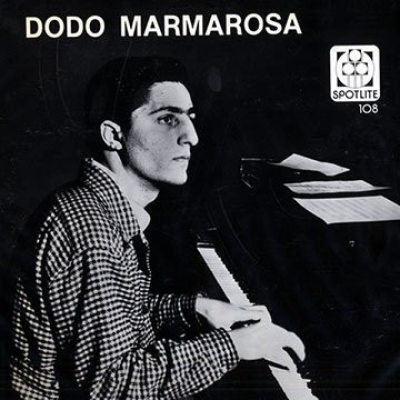
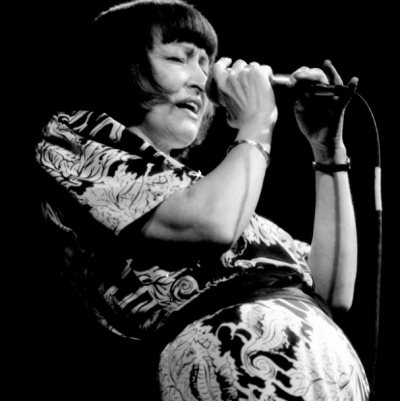
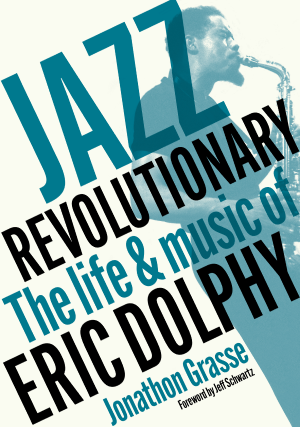
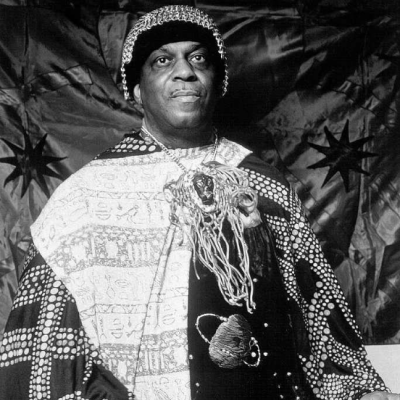
Click here to read more short fiction published on Jerry Jazz Musician
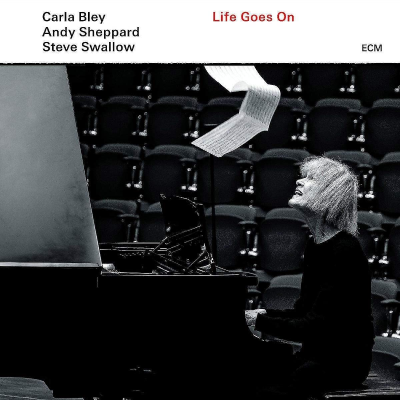

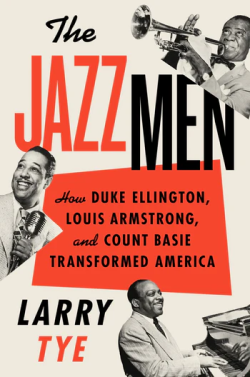
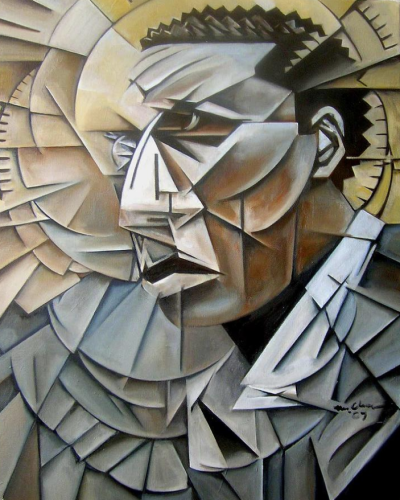
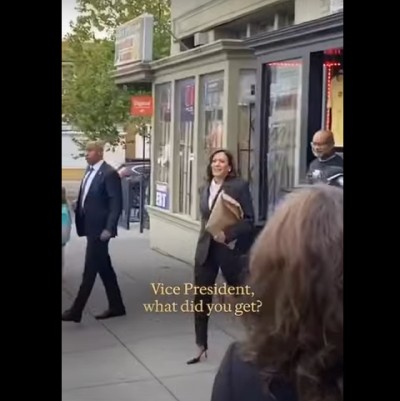

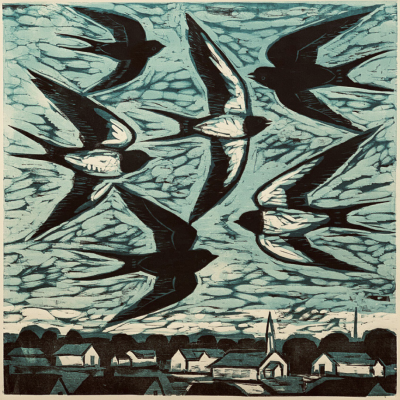
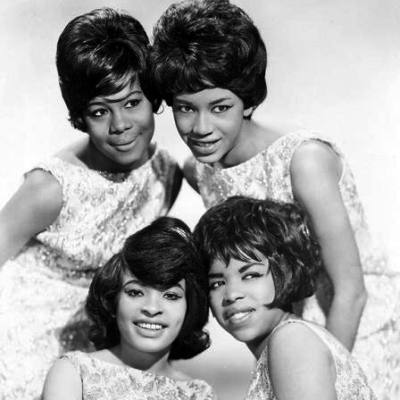

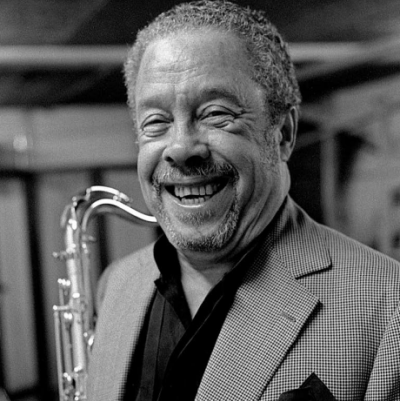
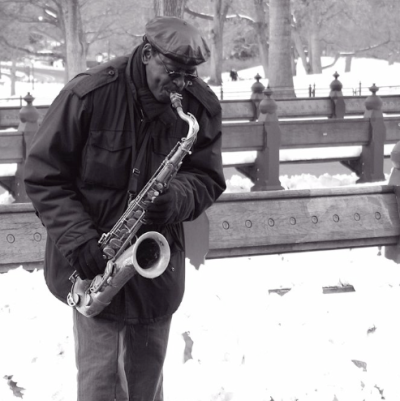
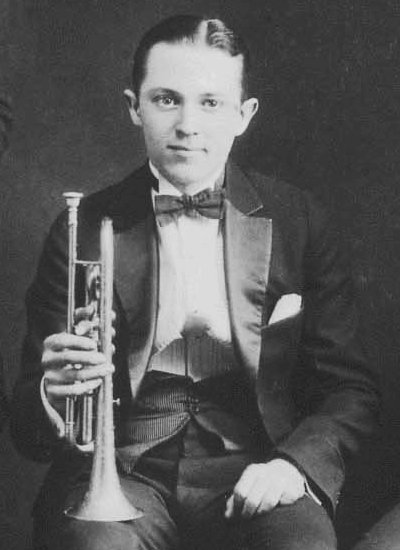
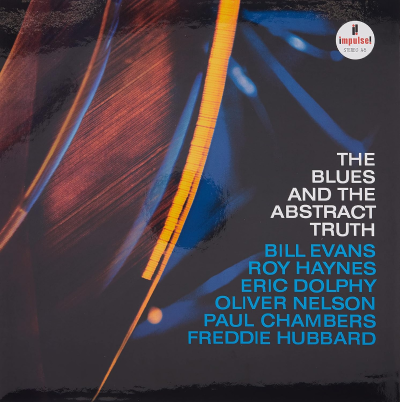
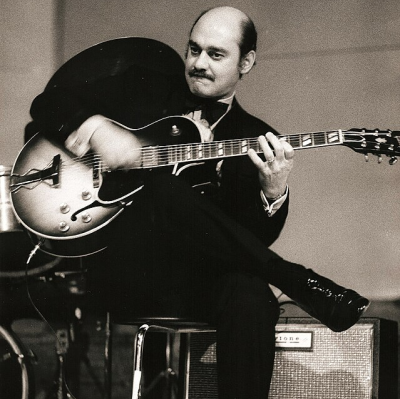
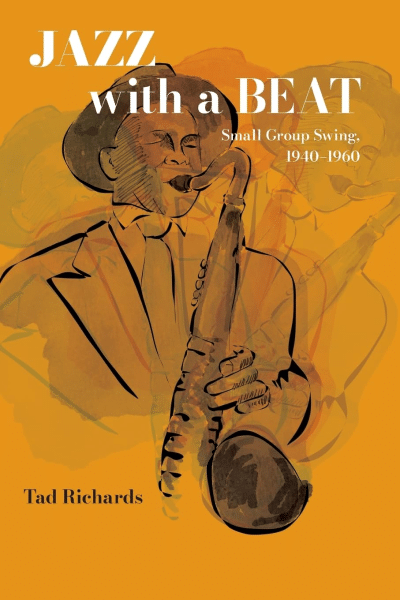
Click here to read more book excerpts published on Jerry Jazz Musician
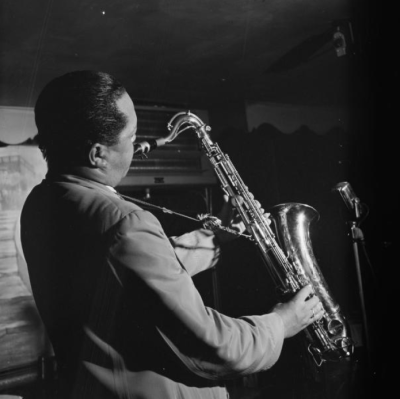
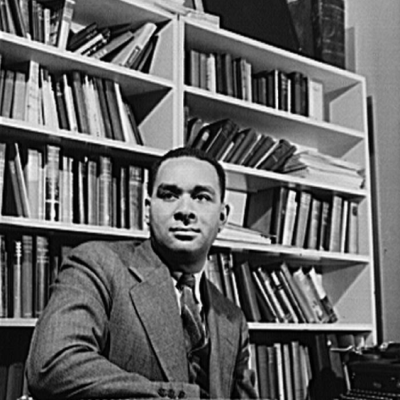




Dear Readers:
Reader funding helps support the expense of publishing this website, and to keep it free of advertising – which is a rarity in the dot-com world. Many thanks to those who have recently contributed, and to those who have done so multiple times. Your support is very much appreciated.
If you are able, please consider making a contribution? Information regarding how to do so is found by clicking here.
For viewing my long range vision for Jerry Jazz Musician, please click here.
Thank you!
Joe Maita
Editor/Publisher
,

